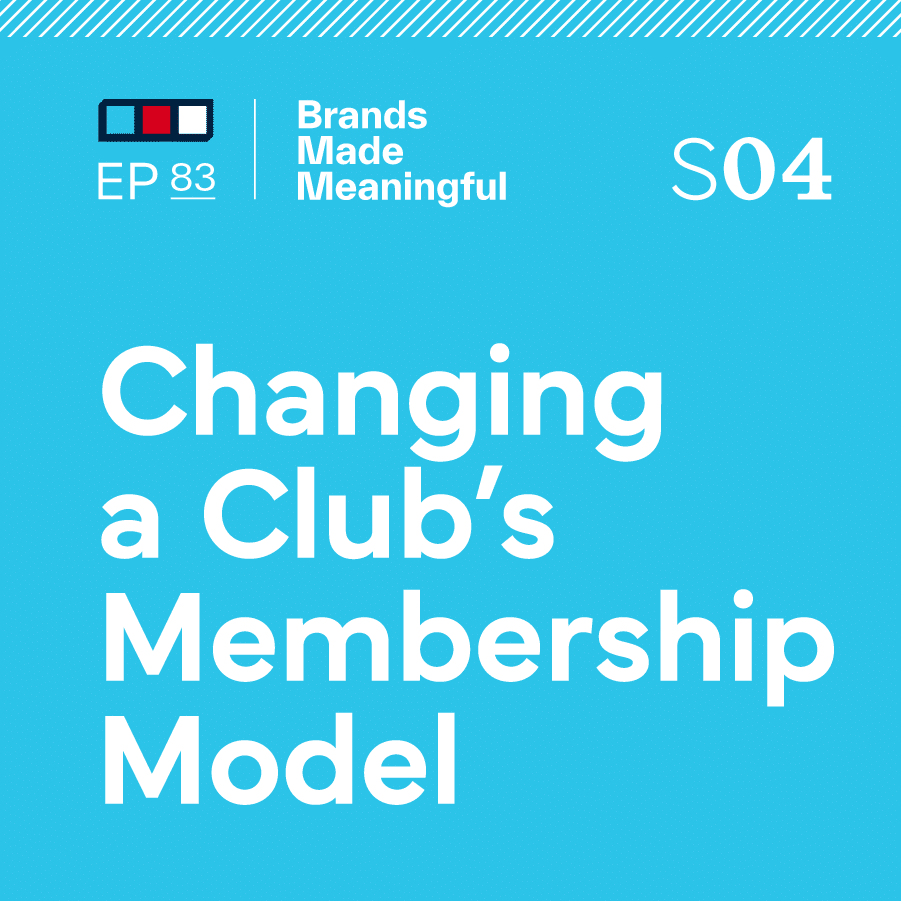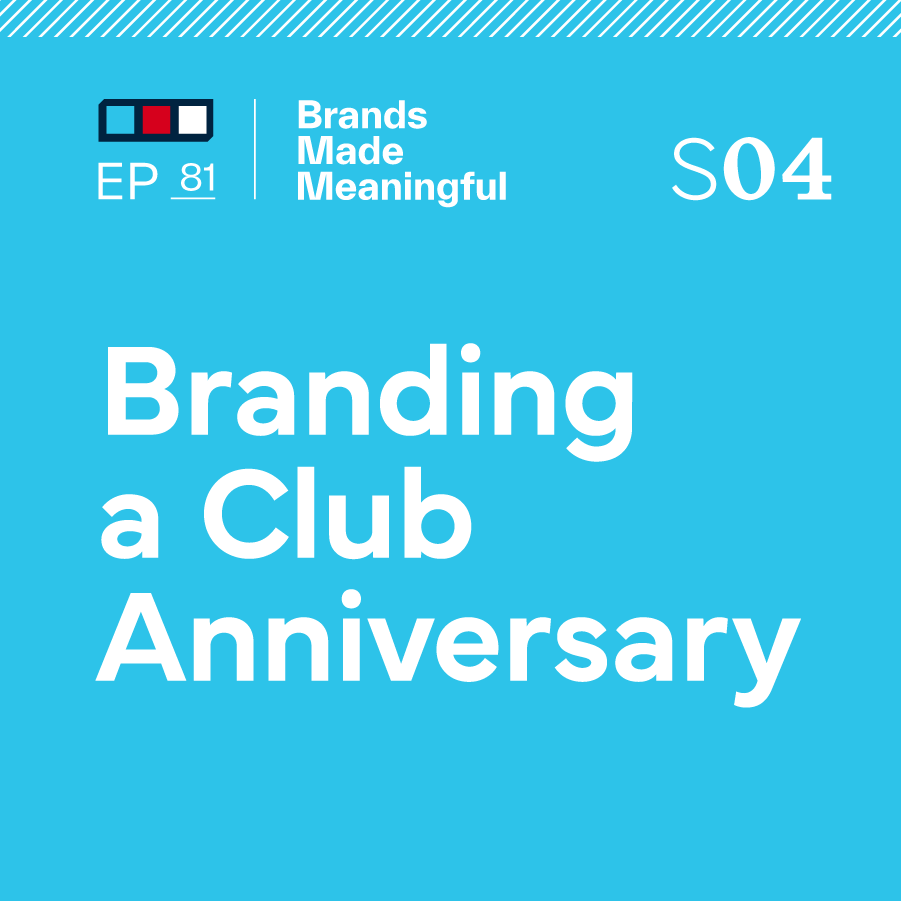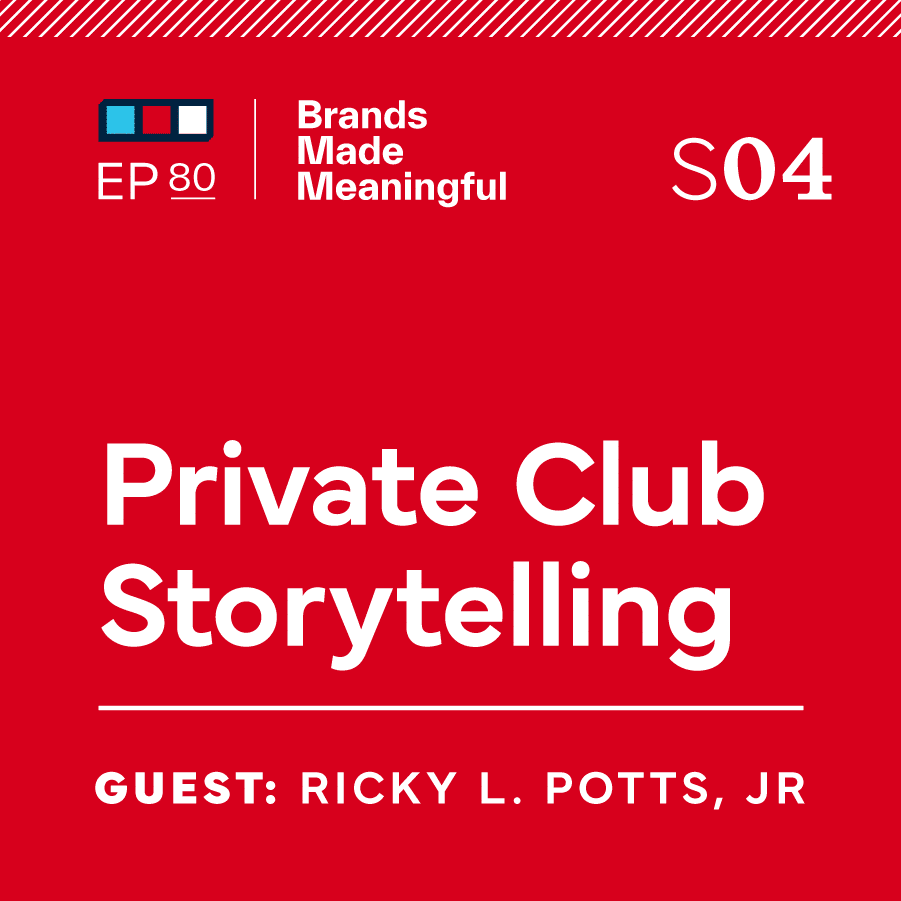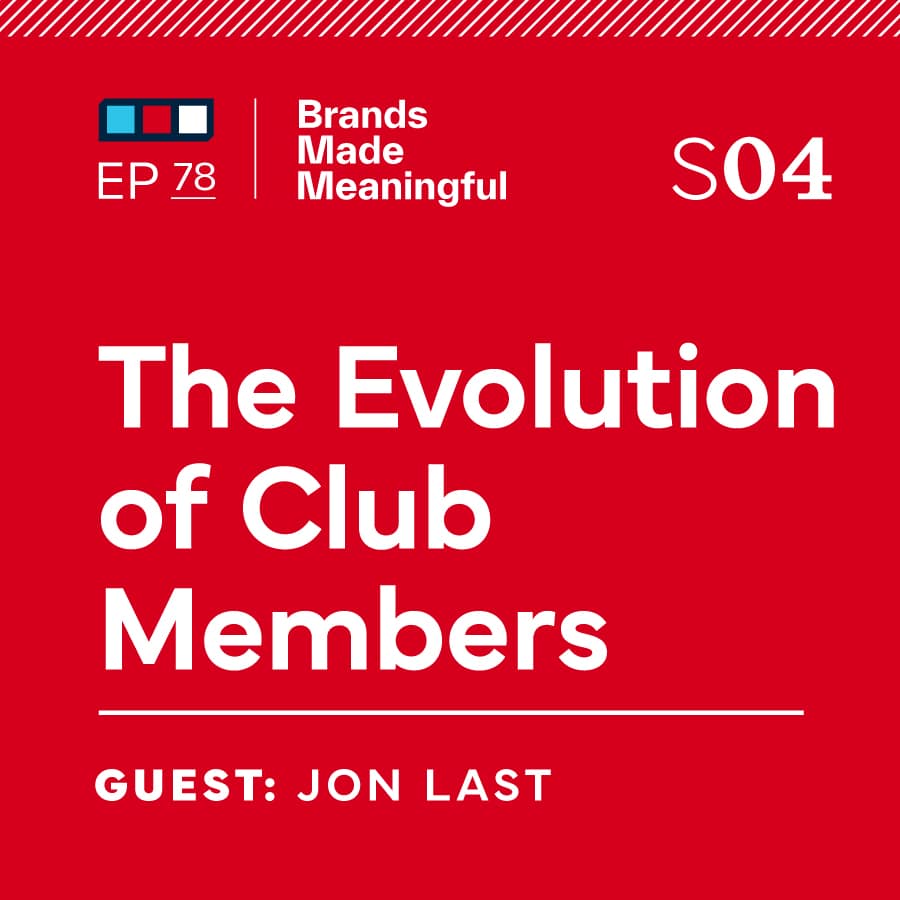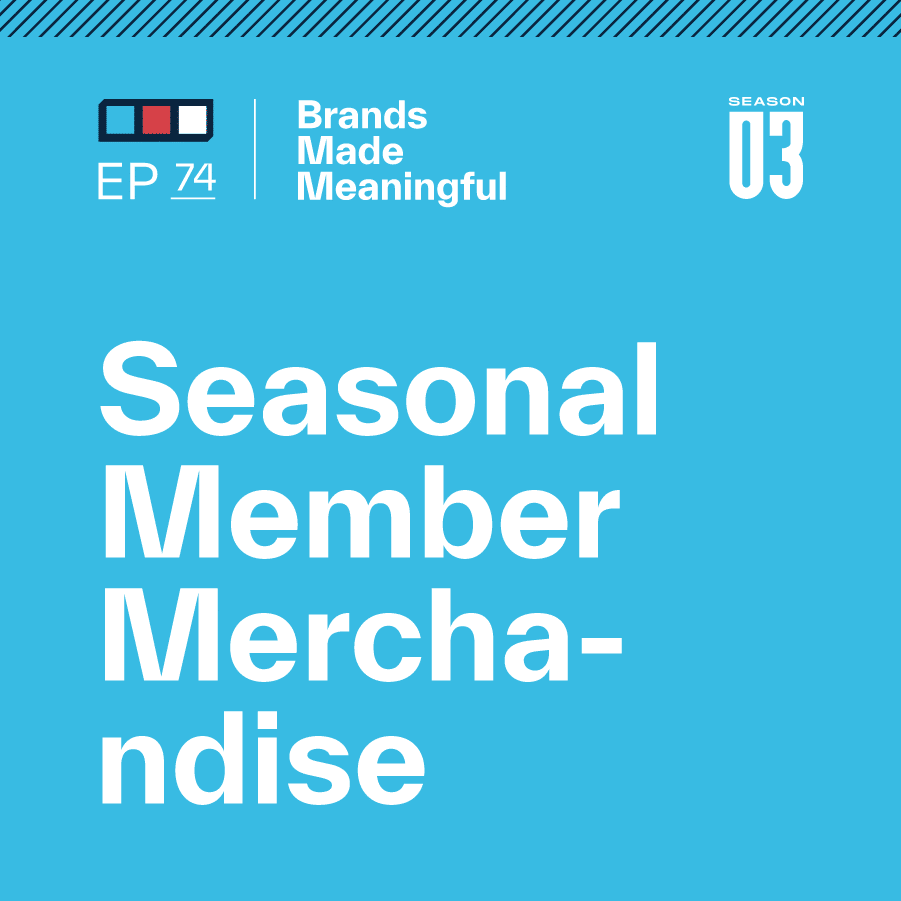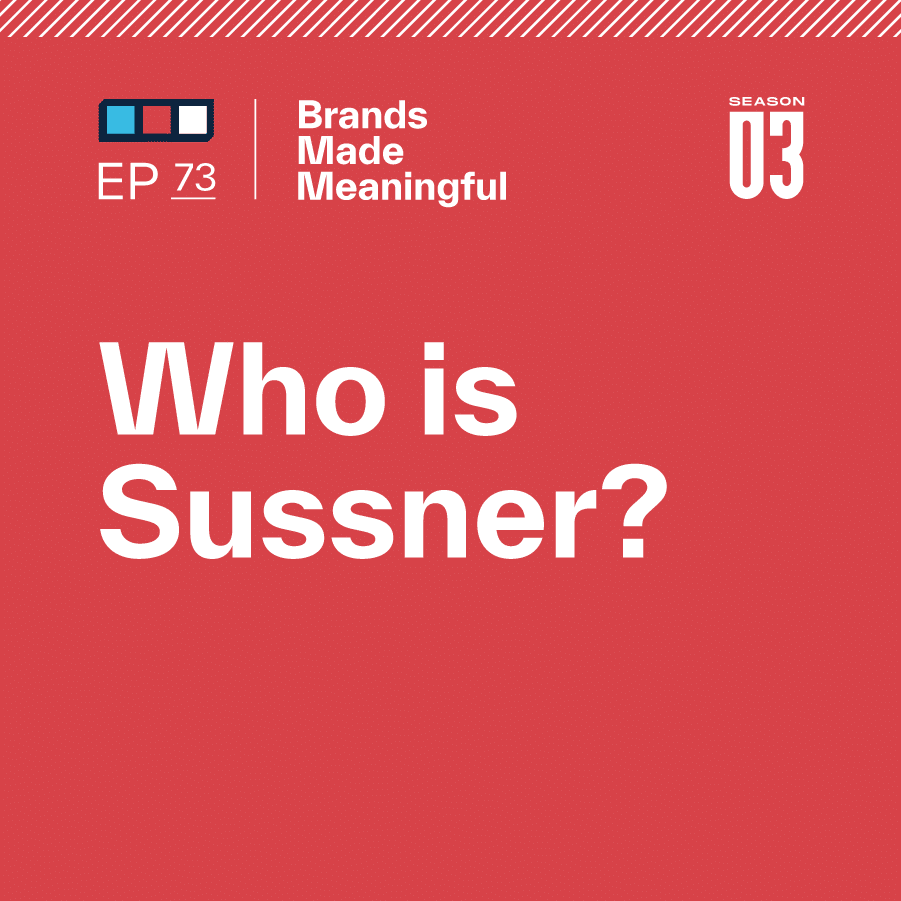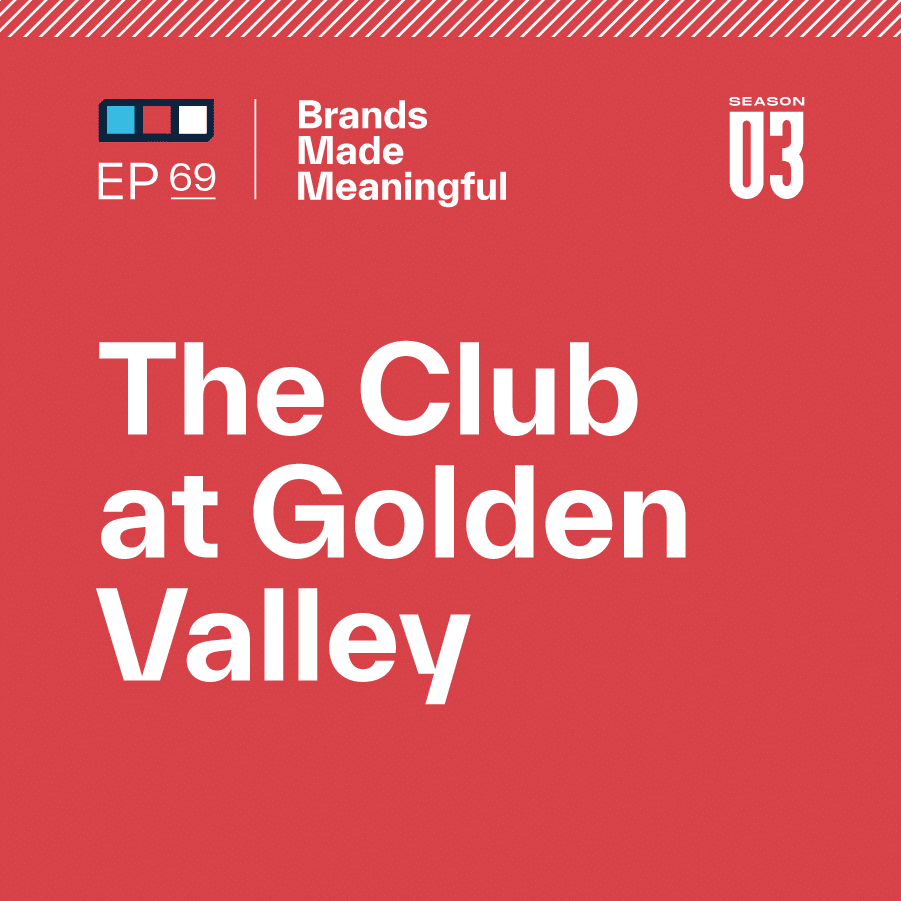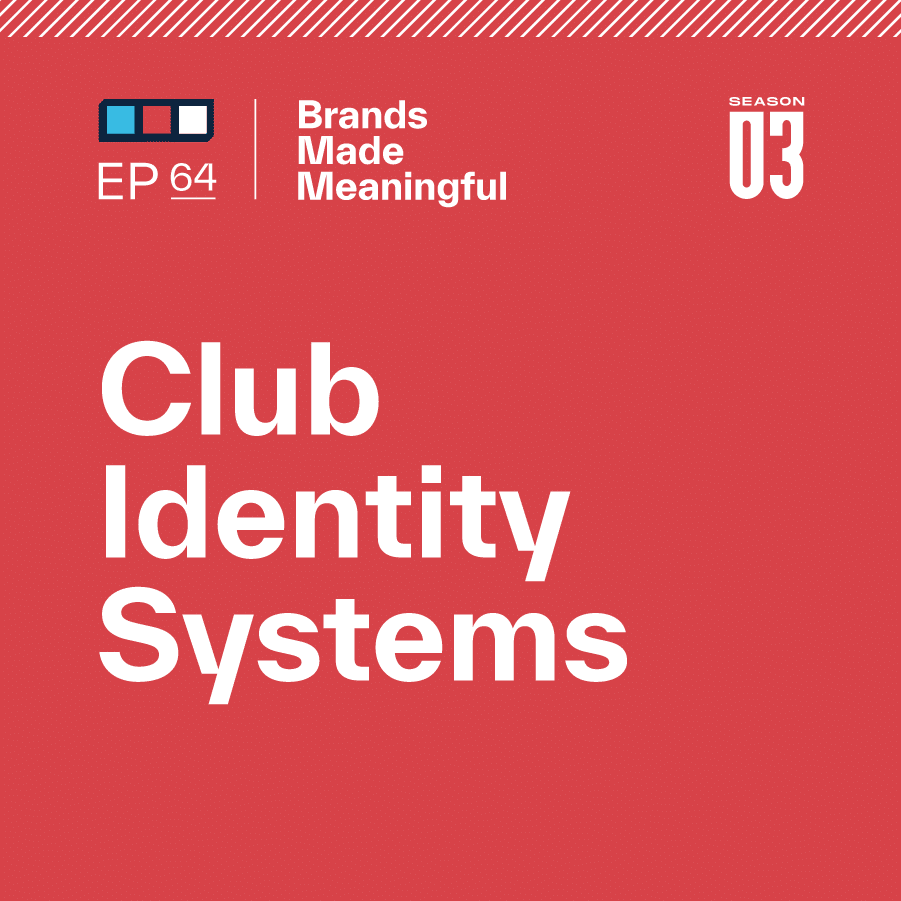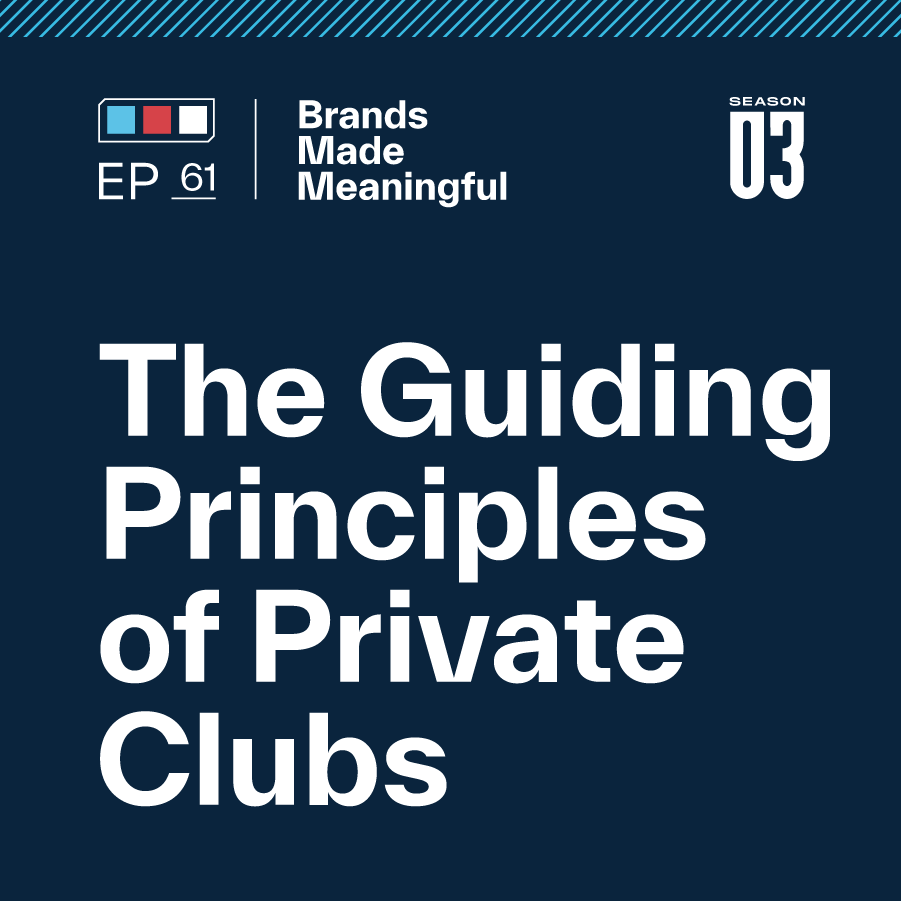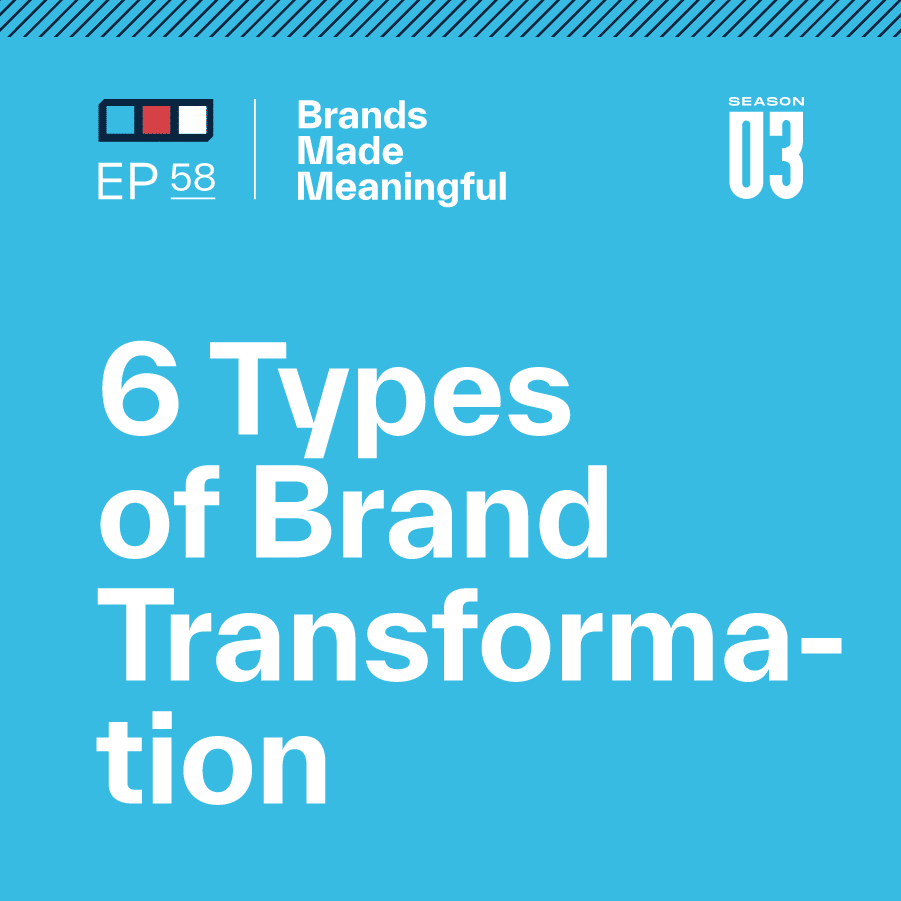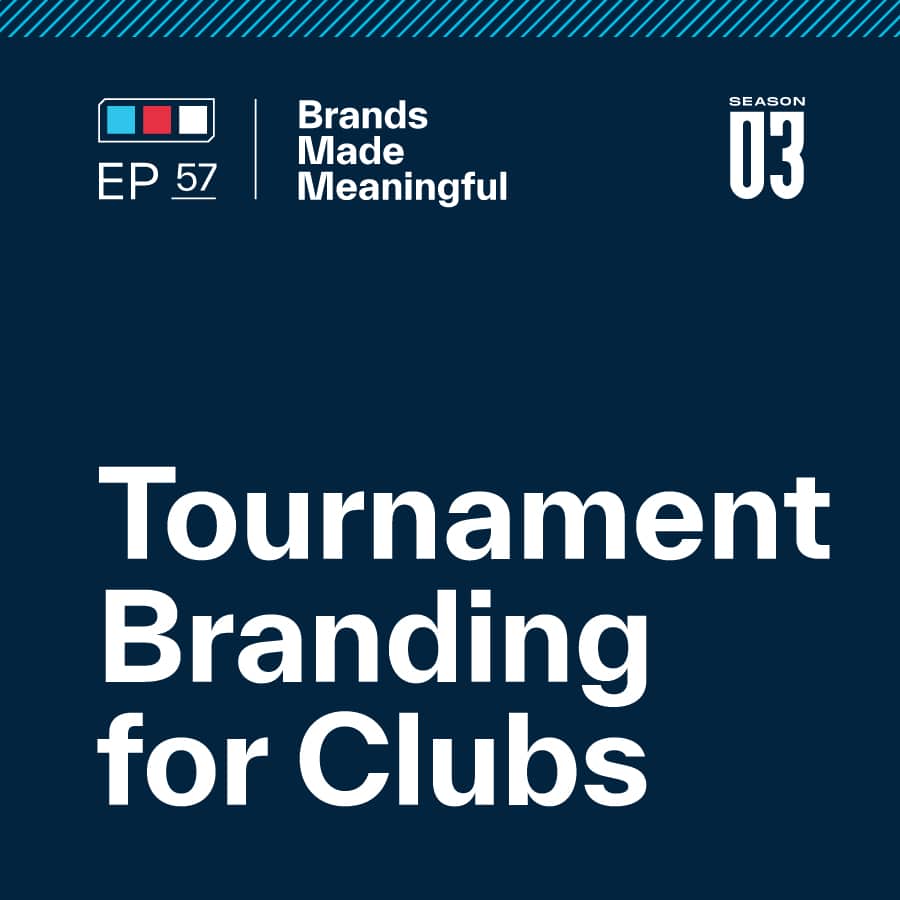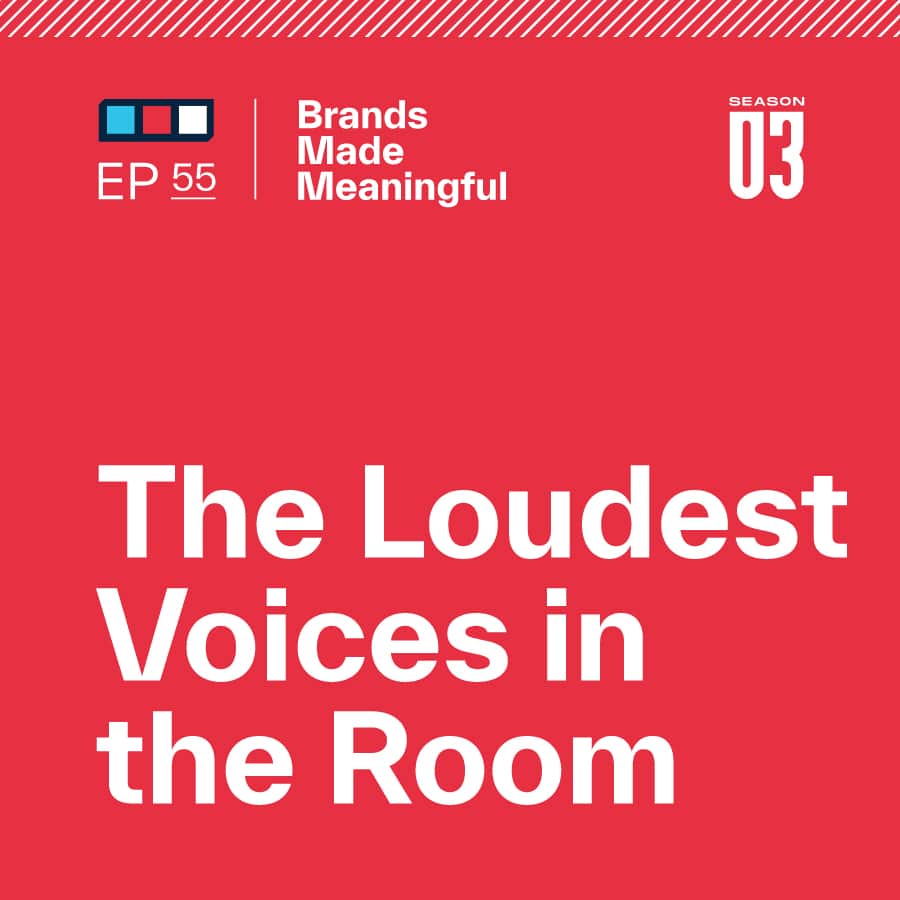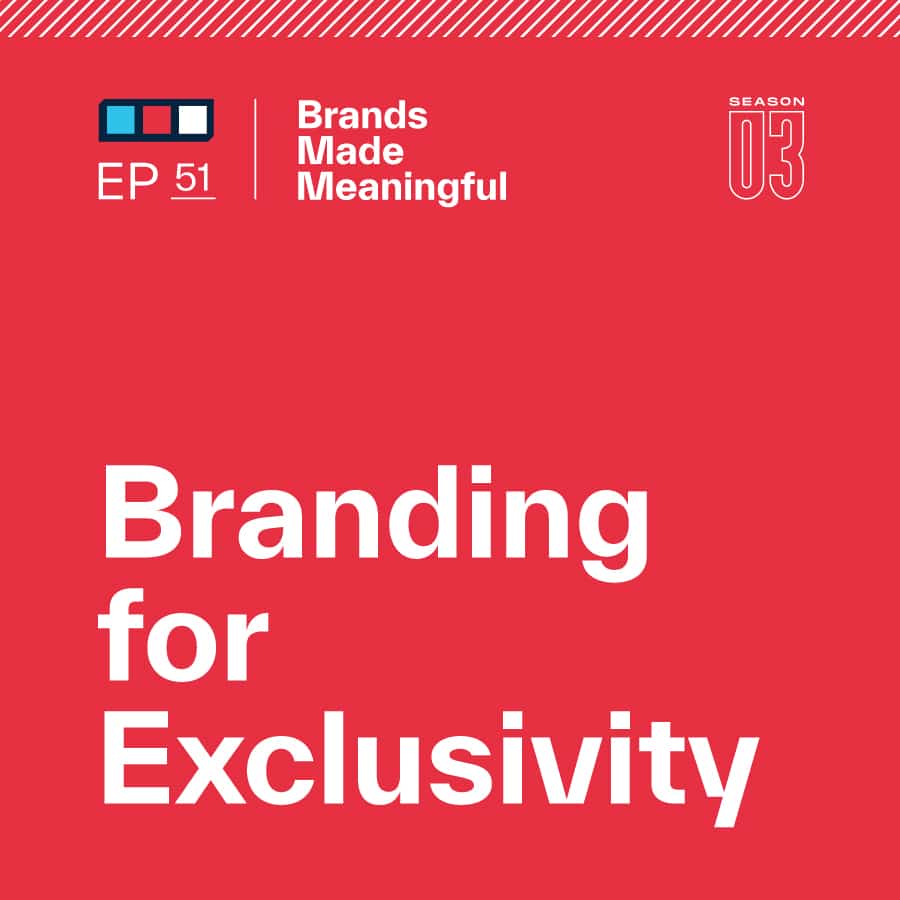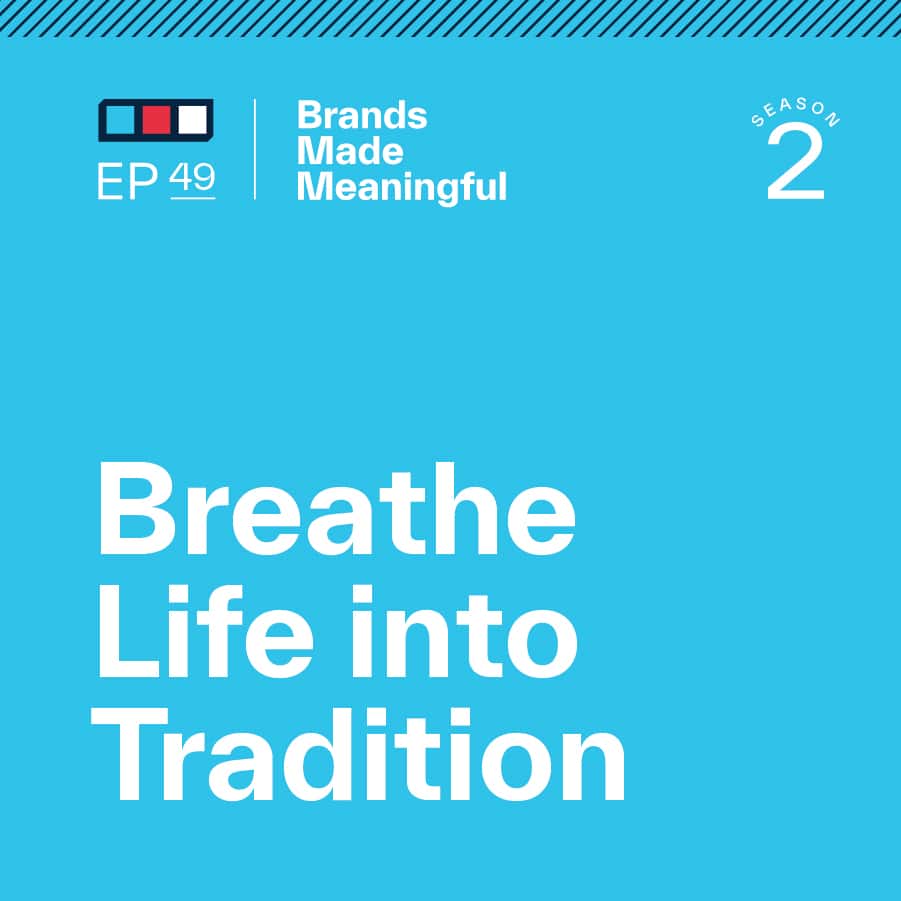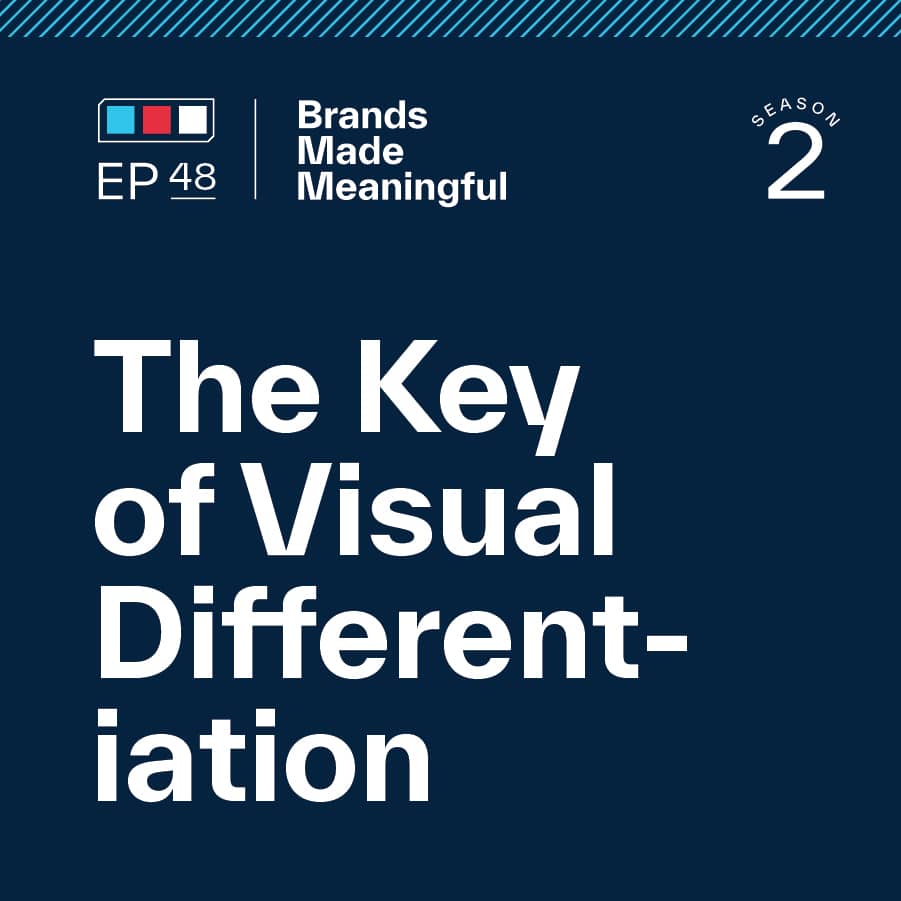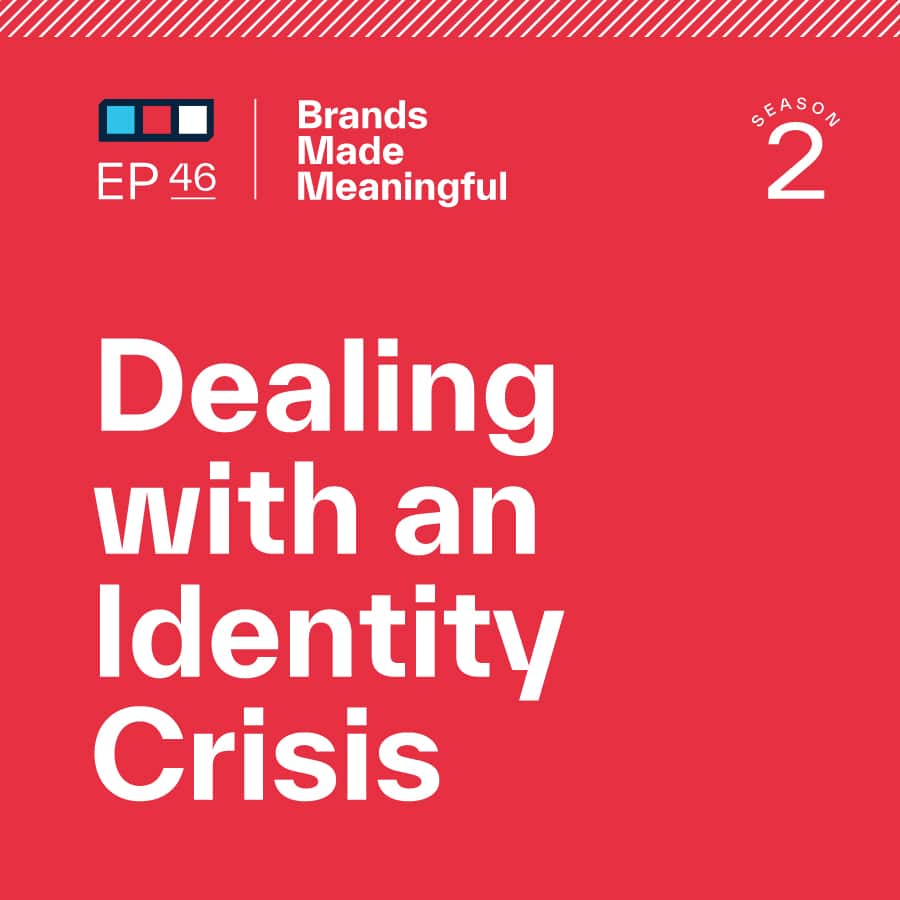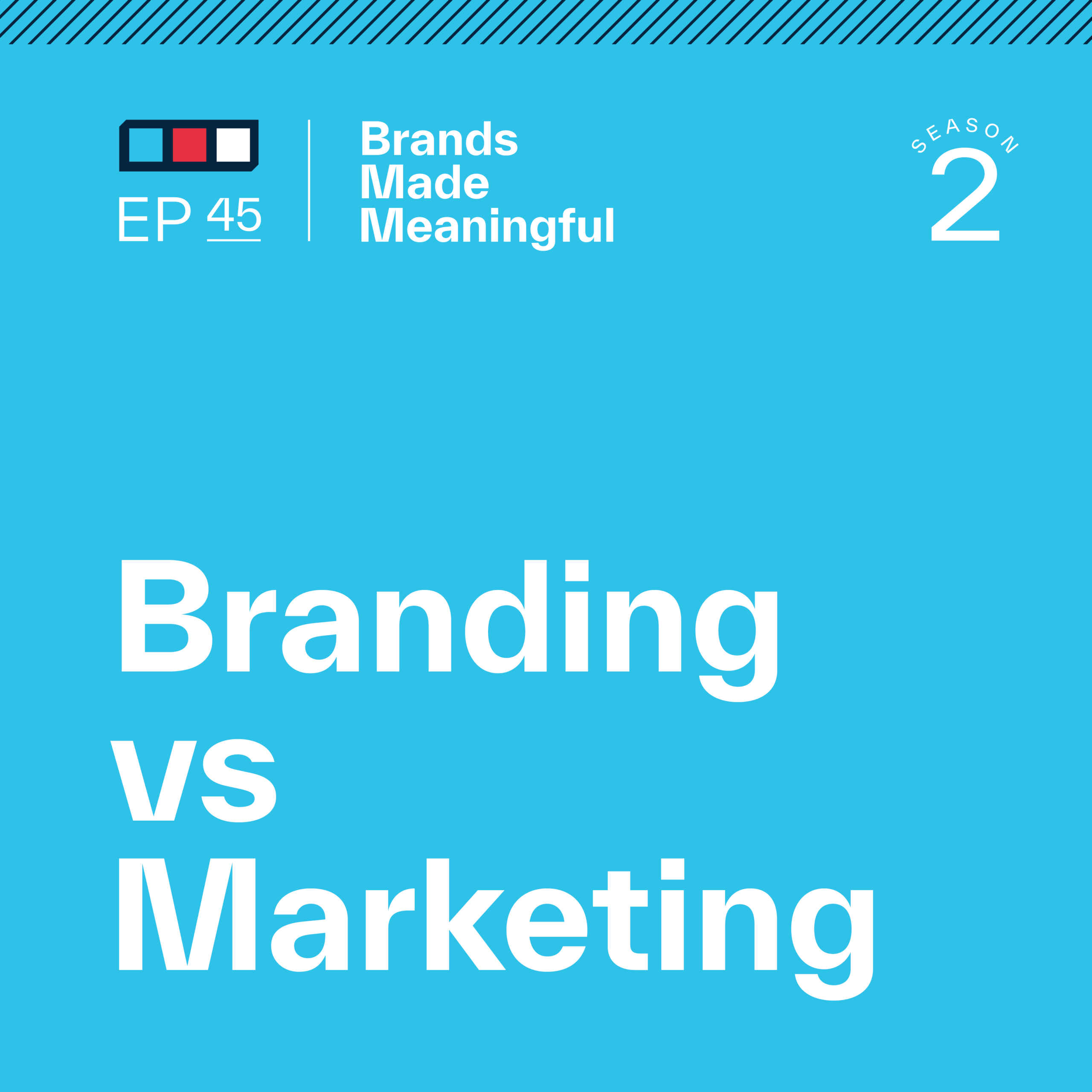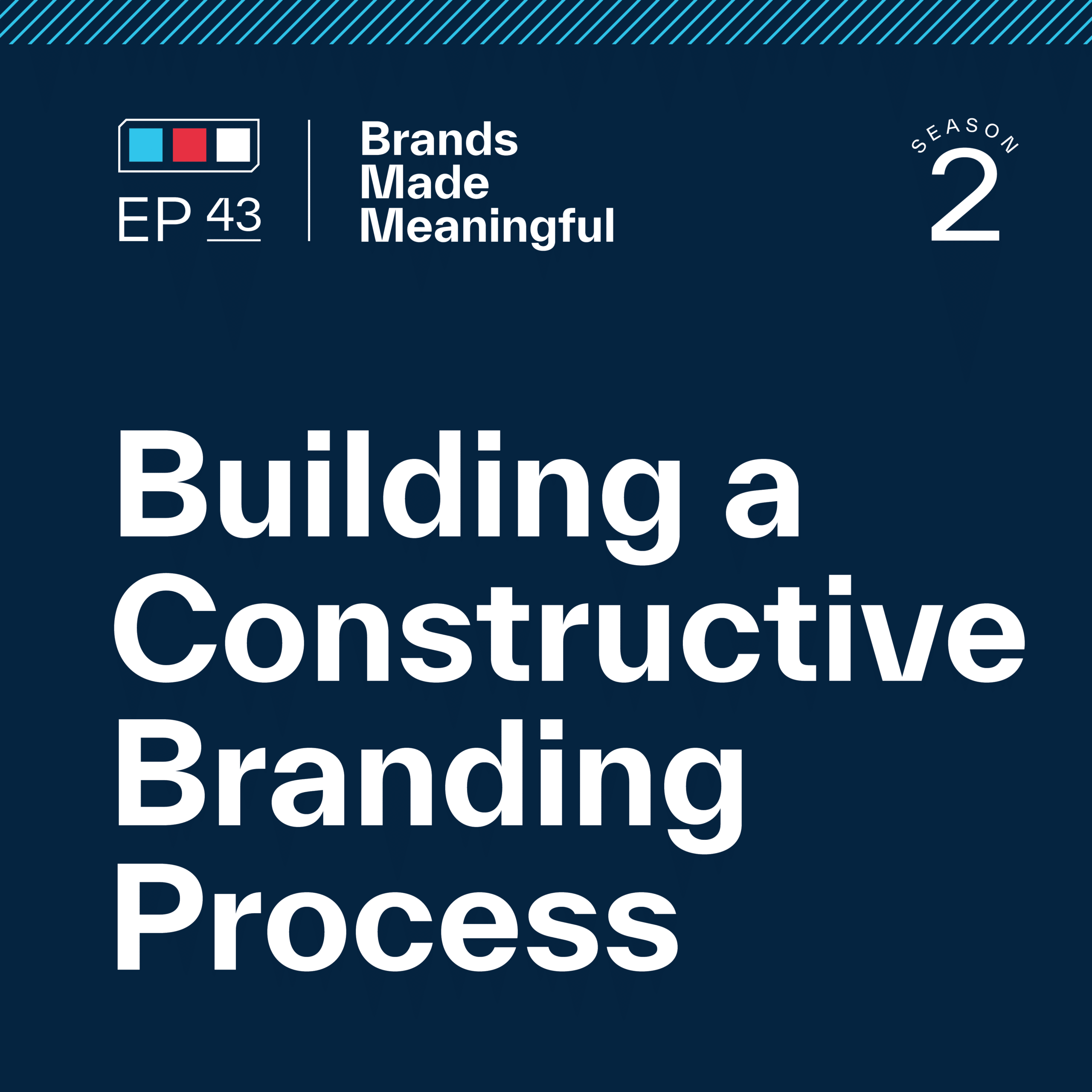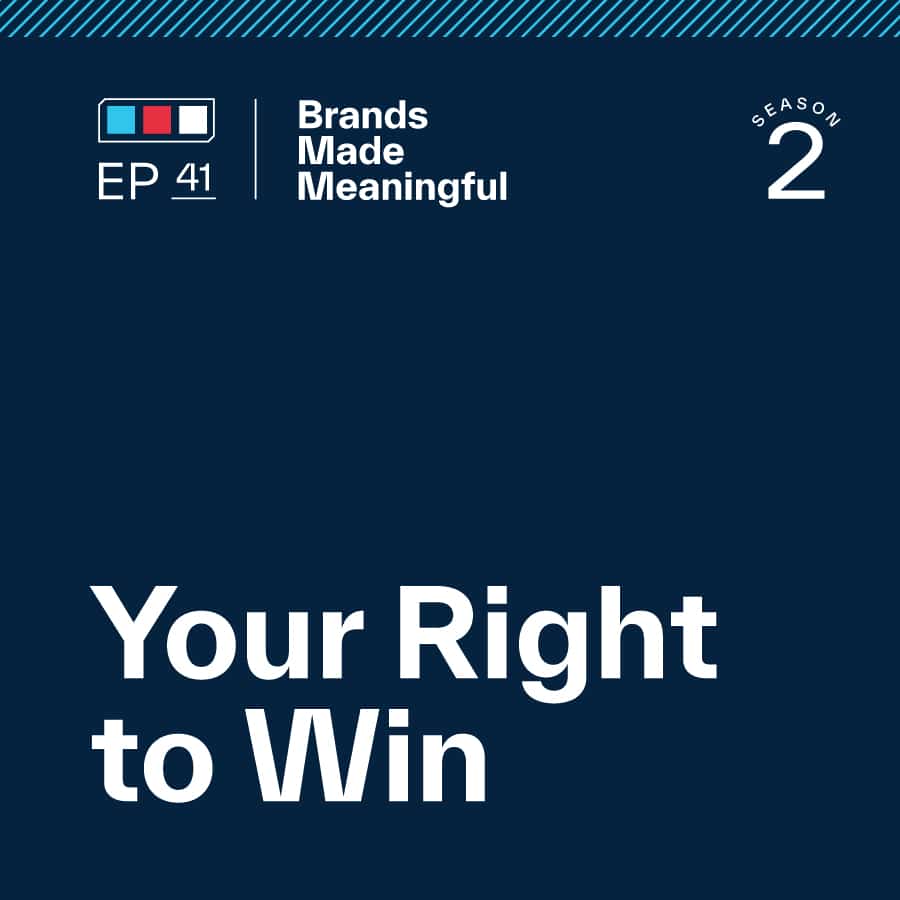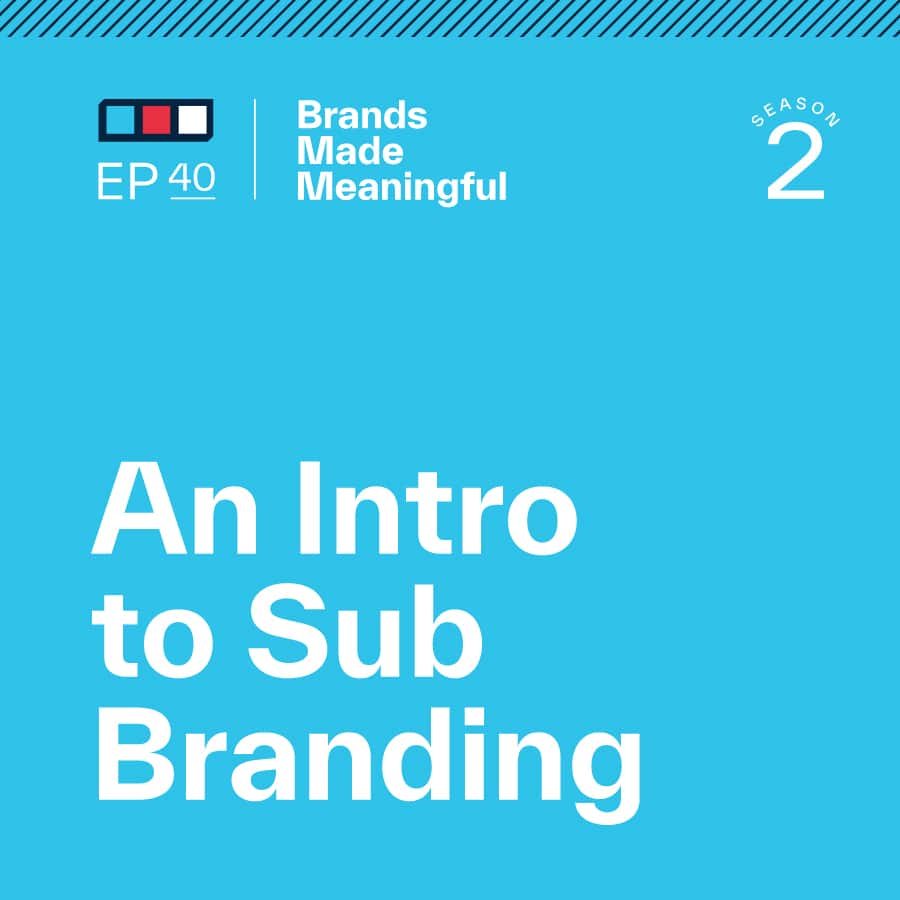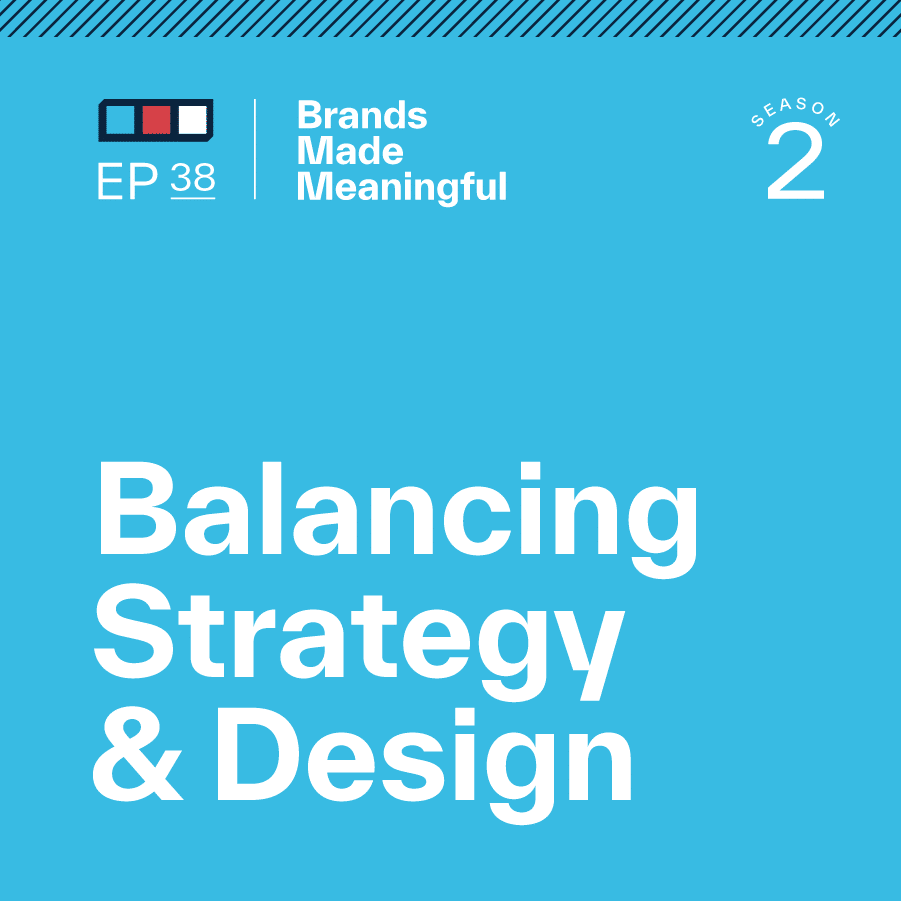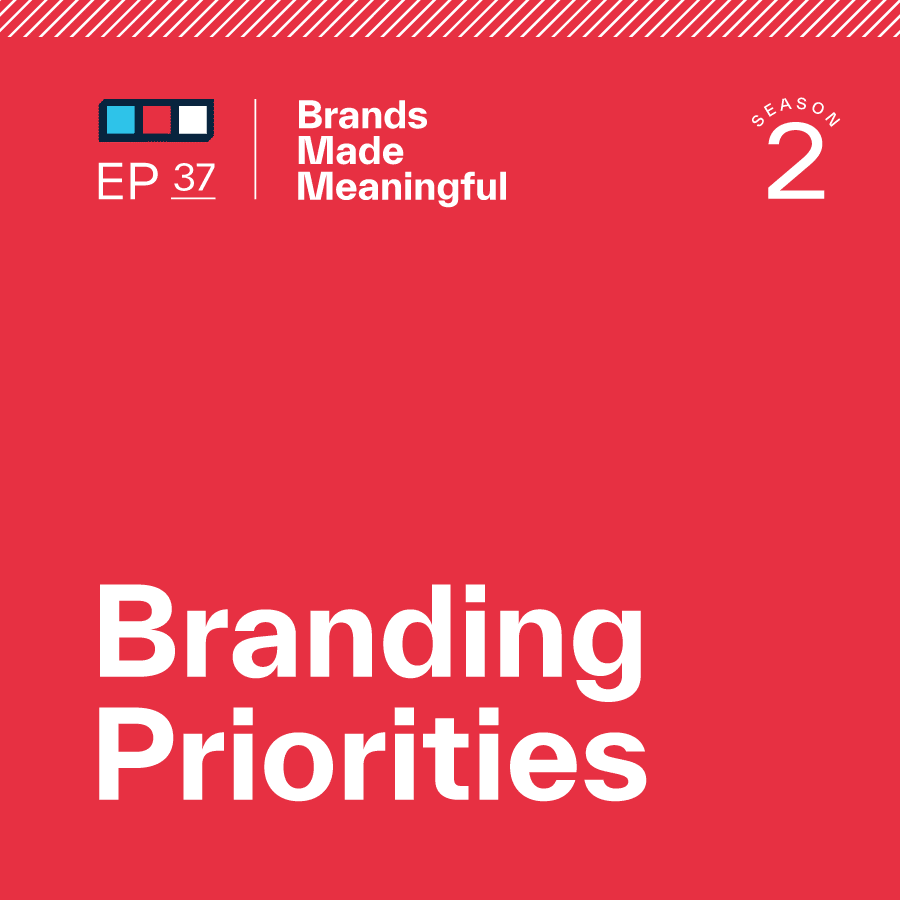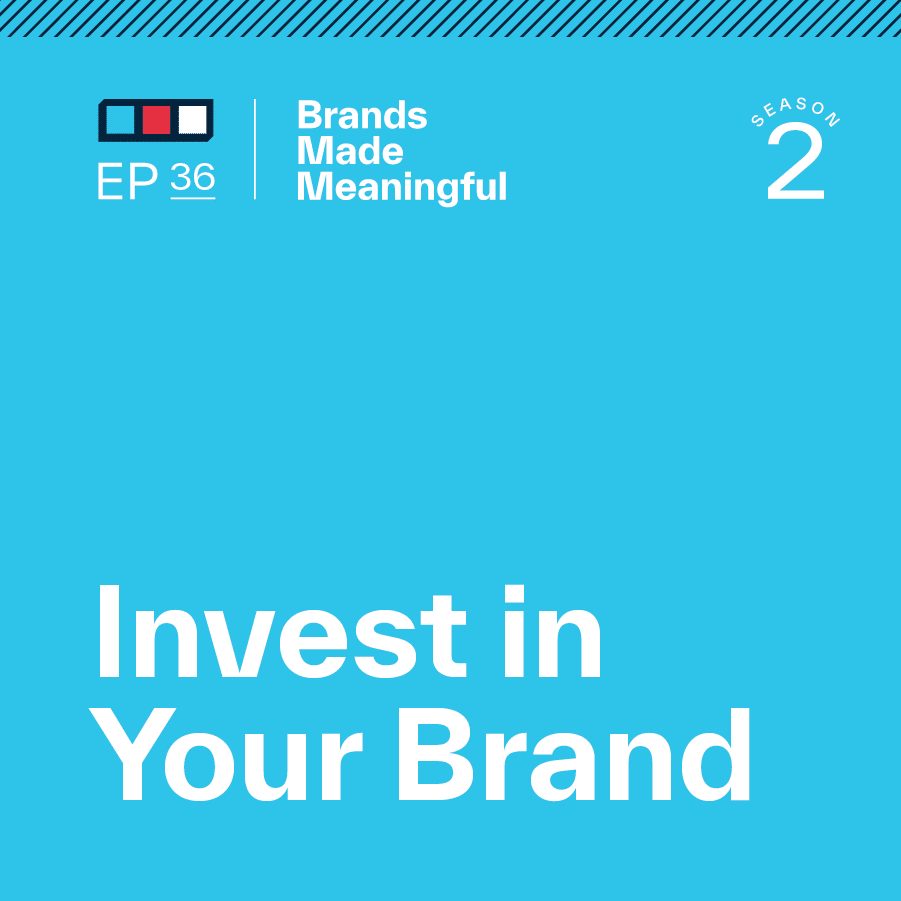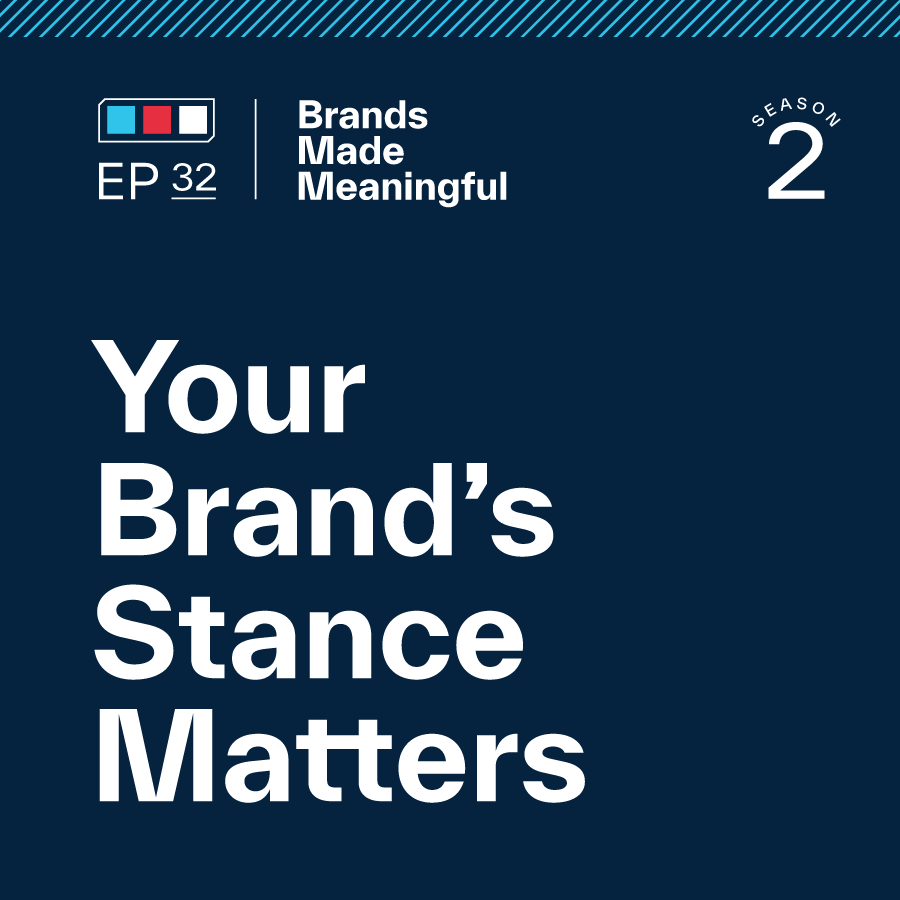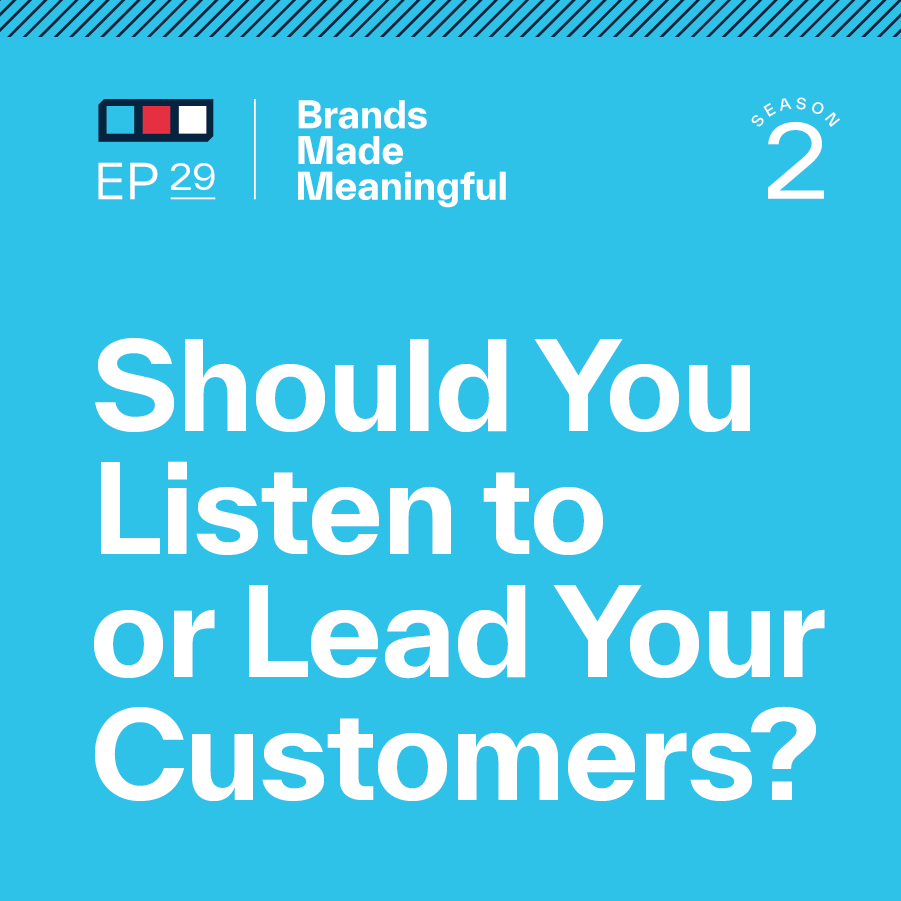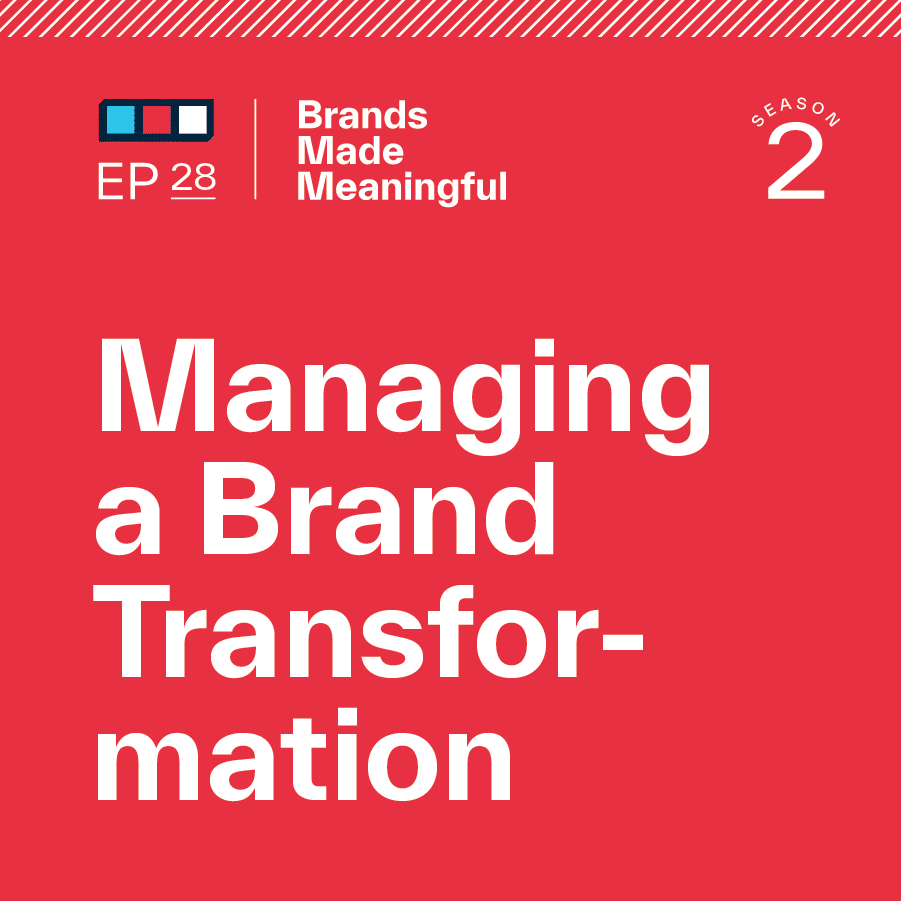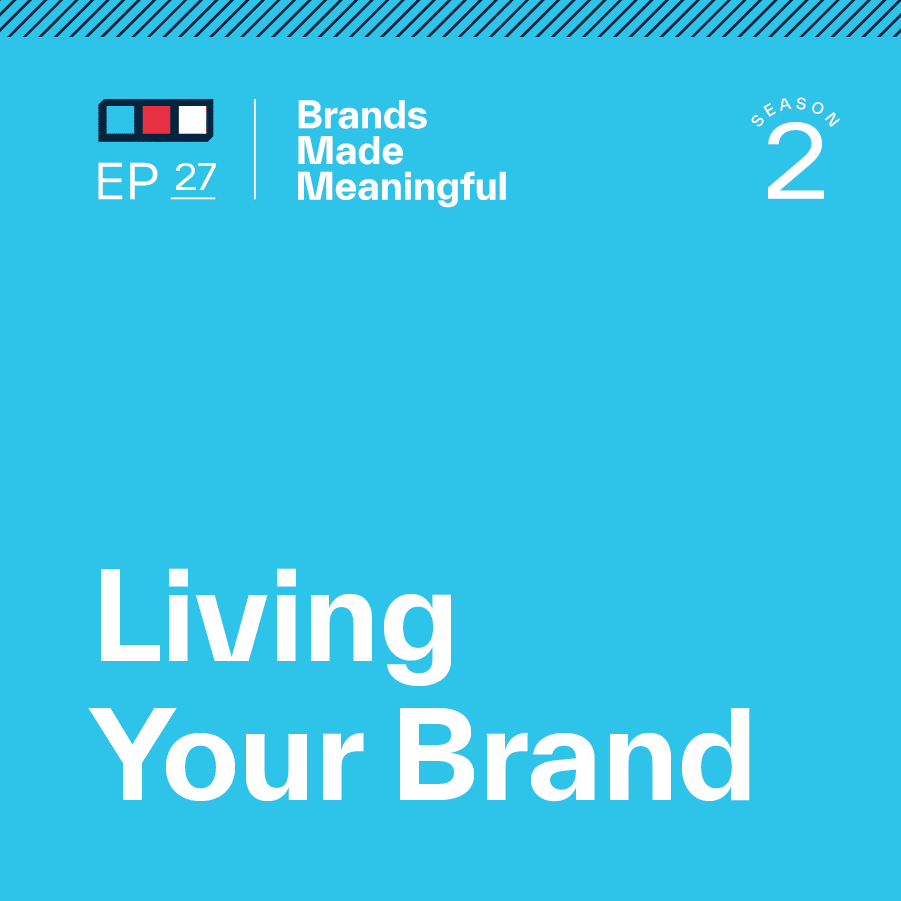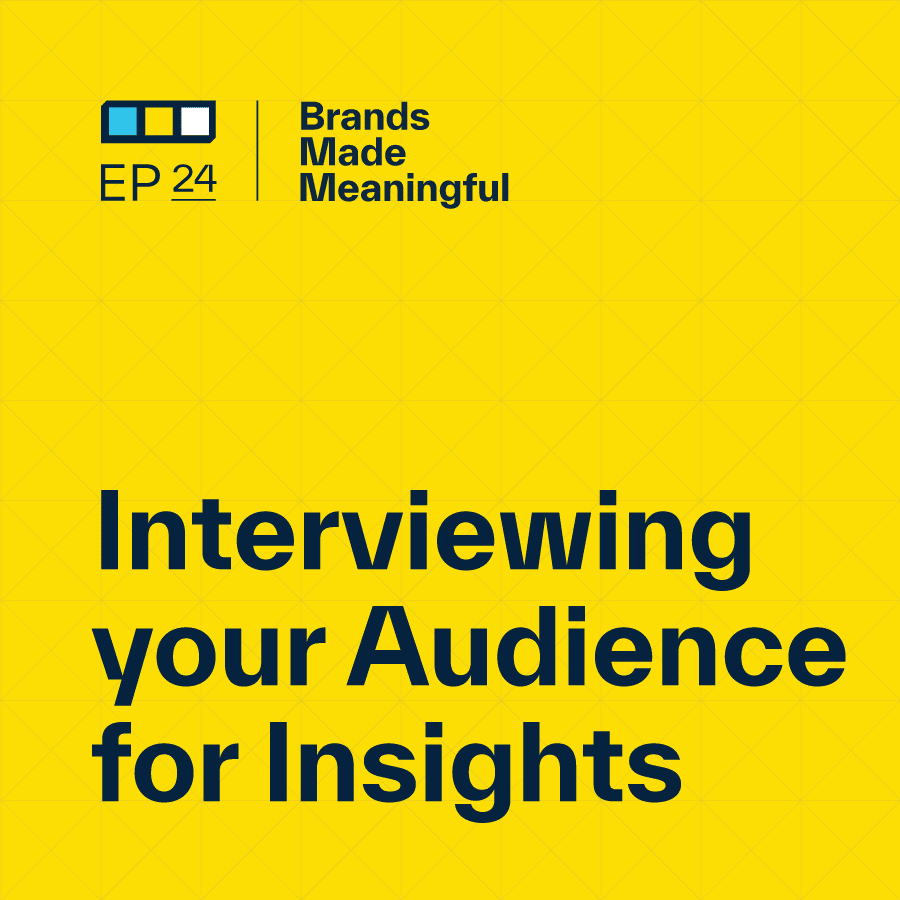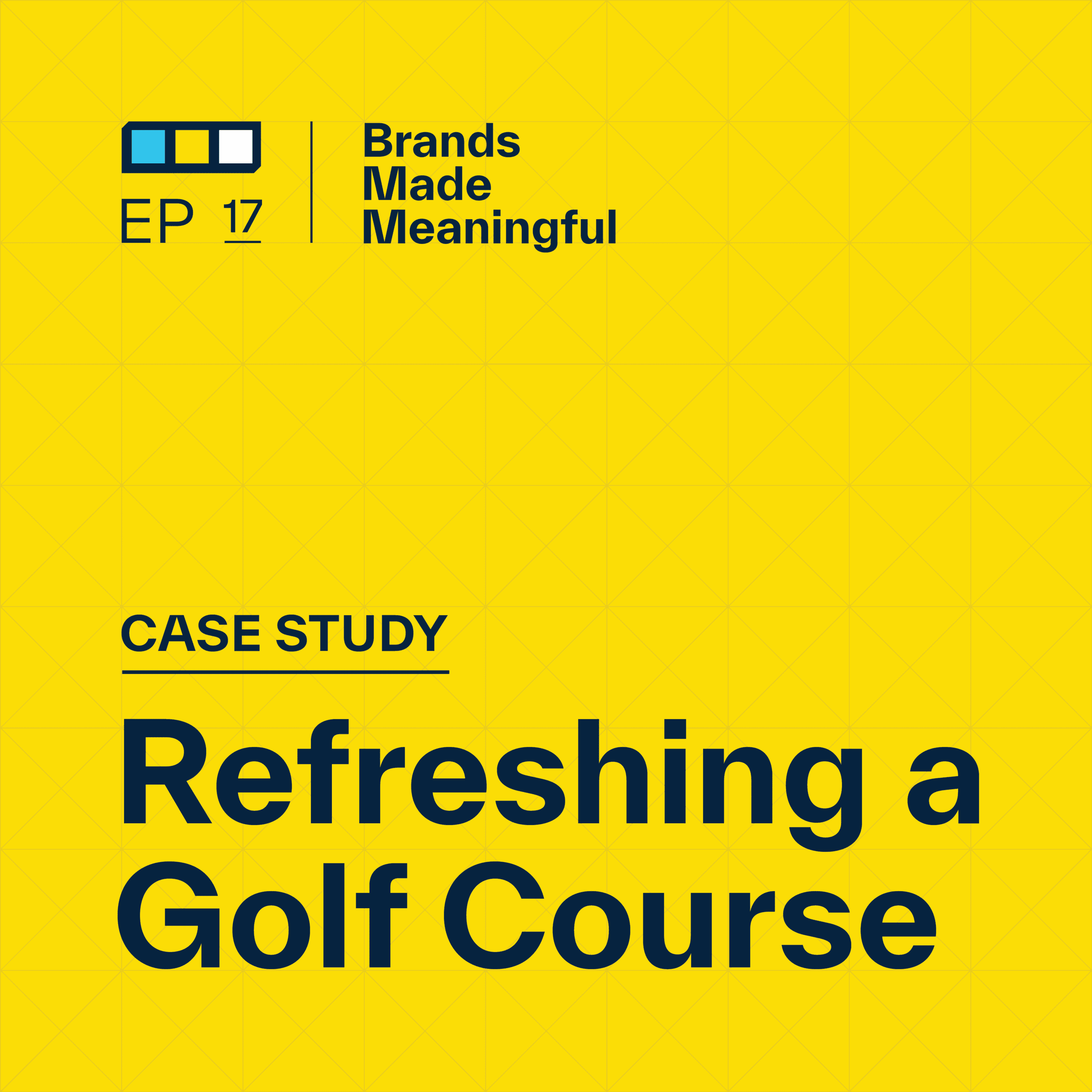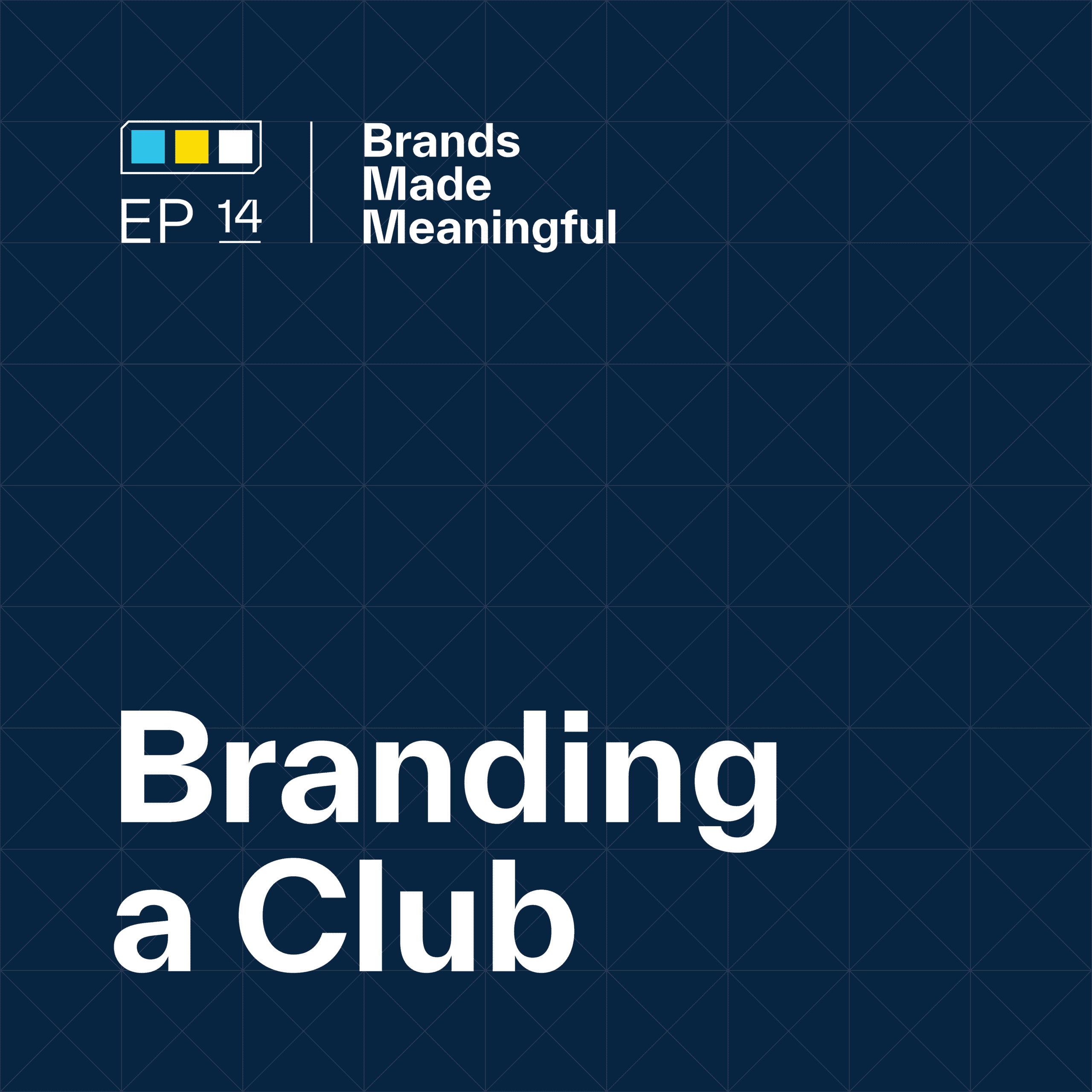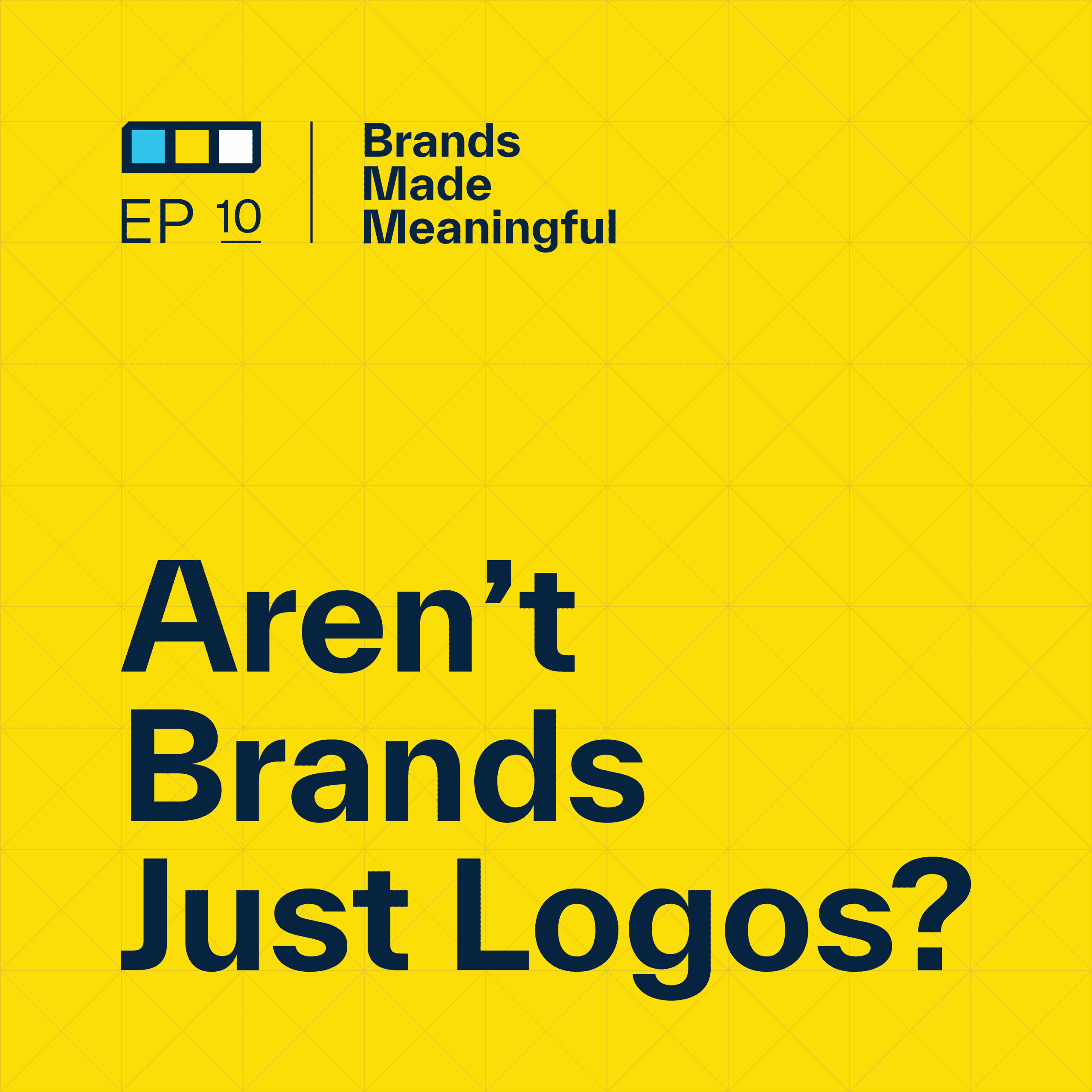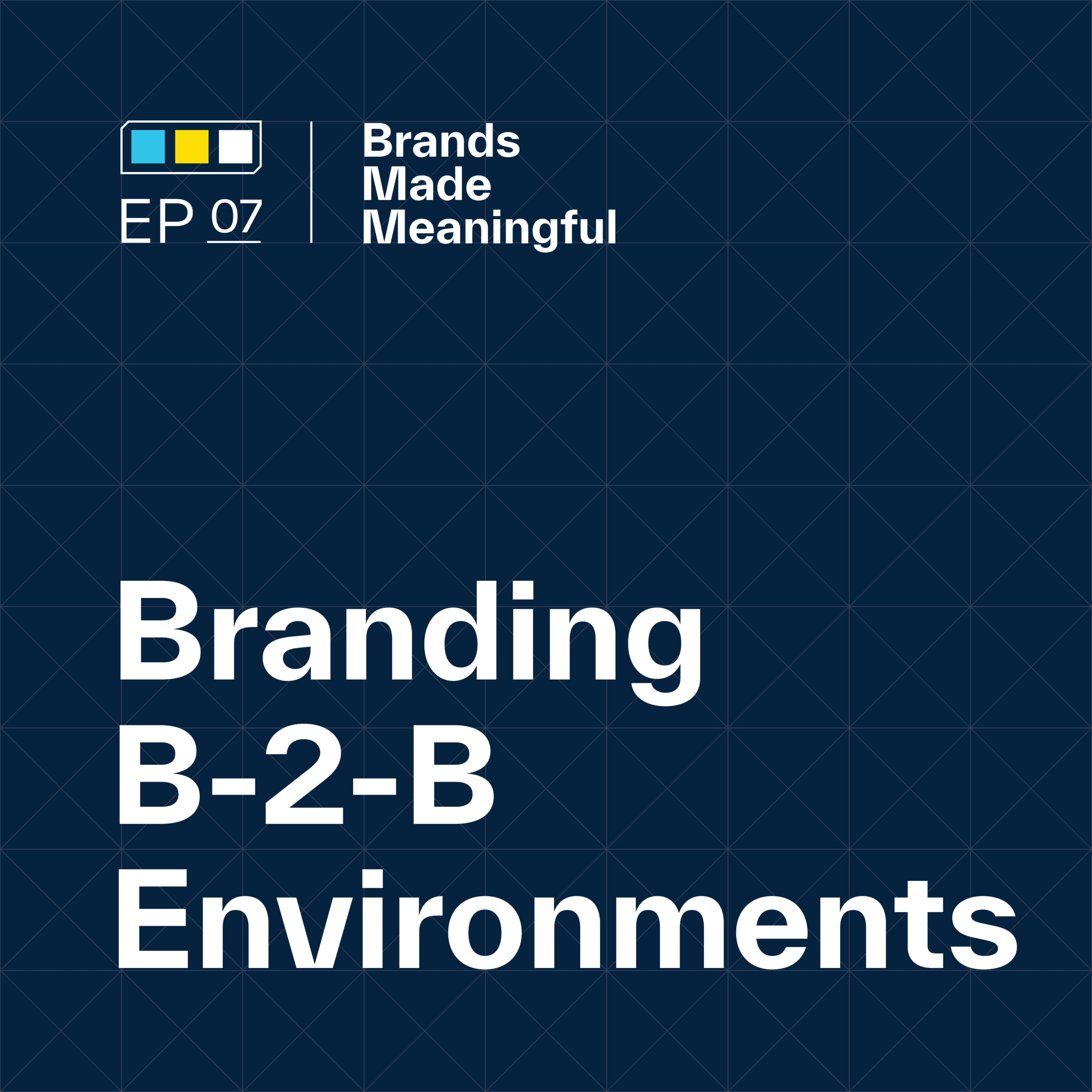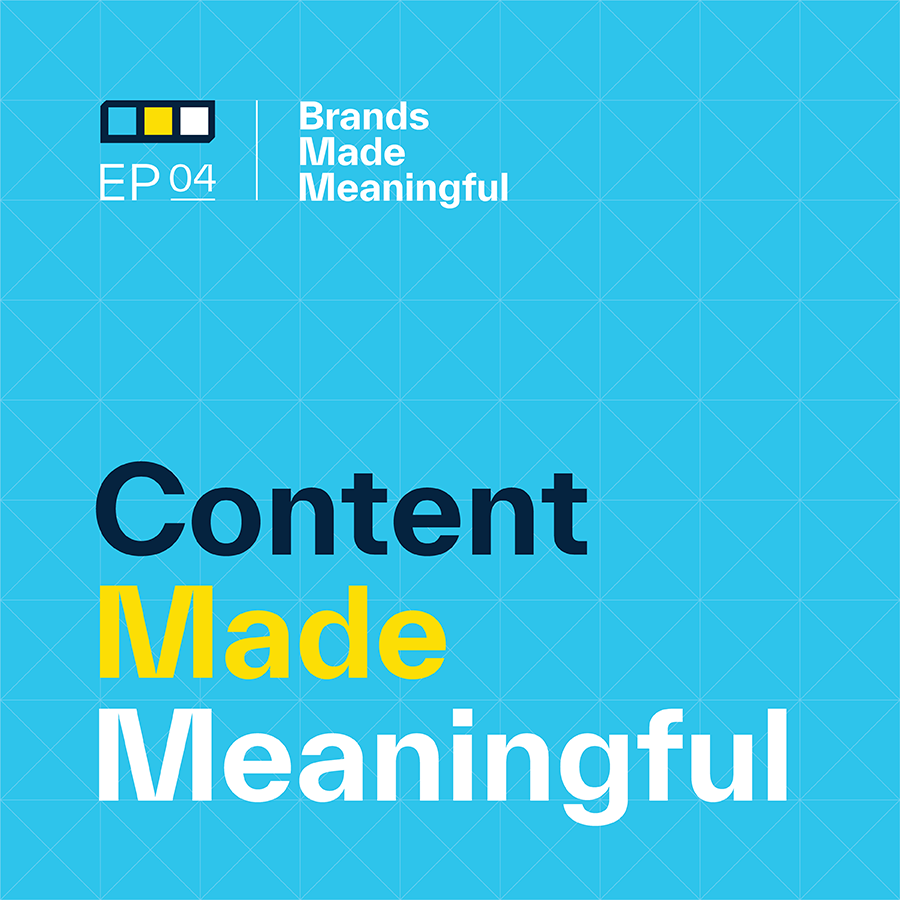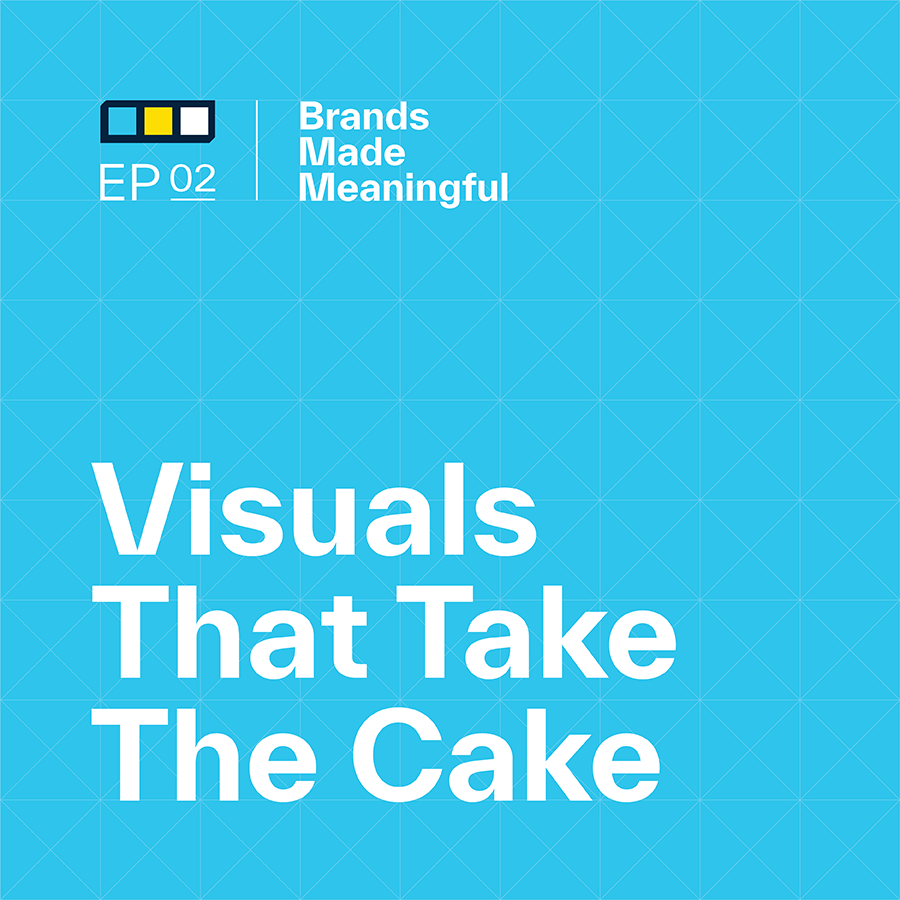EPISODE 63
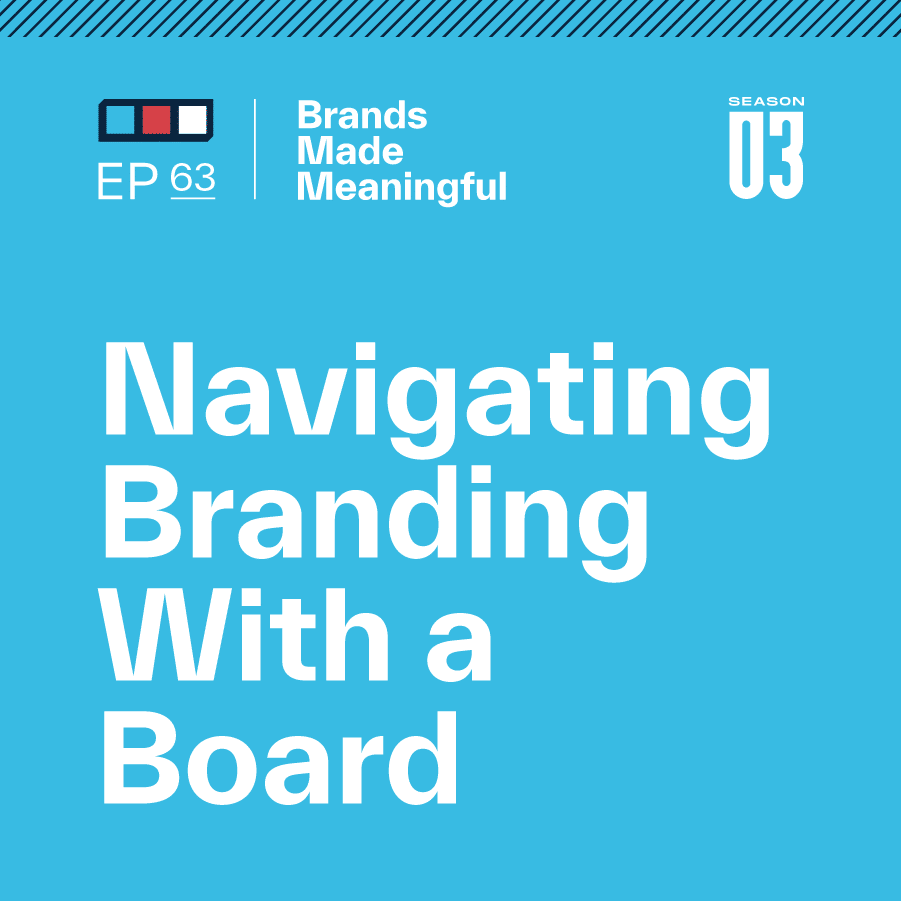
Navigating Branding With A Board
Episode 63
Derek and Tucker bring clarity to working branding with a board cohesively and uniting your company under one cohesive vision.
EPISODE TRANSCRIPTION
Last time we talked about committees. Today, I think it’s more relevant to talk about boards because that’s the next line of defense for the club world.
Tucker When we work with branding, we deal with both of those. We deal with committees. We deal with point people. We deal with boards. We deal with each other. So how you think we should go about that is really what I think this conversation’s all about.
Expand Full Transcript
Derek Welcome to Brands Made Meaningful conversations with the team at Sussner about how purposeful branding inspires unity, identity, and powerful change for growth-minded organizations.
Tucker Derek, last time we talked about committees. Today, I think it’s more relevant to talk about boards because that’s the next line of defense for the club world. When we work with branding, we deal with both of those. We deal with committees. We deal with point people. We deal with boards. We deal with each other. So how you think we should go about that is really what I think this conversation’s all about.
Derek So what we’re talking about is when there’s a branding initiative at a club. Last time we talked a little bit about the different parties that are involved. Oftentimes there’s a general manager involved. There’s usually, at least in our experience, a branding committee or a marketing committee that’s primarily made up of member volunteers. And we talked a little bit about then the board of directors, which is ultimately the group of people that are charged with making the decisions on behalf of and for the benefit of their club.
Tucker Hopefully, for the benefit.
Derek When done right. There’s this whole thing in the club world called governance, which is not within our purview, as it gets to management and all the aspects of how things are run fiscally and responsibly, etc.
Tucker We do get into brand governance, which won’t be in this conversation. It’s kind of down those lines a little bit on how we are doing this and making sure we have checks and balances and those things. But I think this is a relevant conversation. For those who don’t work in the club world, you might think a board is a board is a board. For us, we’ve worked with multiple different types of boards. They come in very different sizes. We’ve worked with small boards and big boards. We’ve worked with boards that are only like six people. We’ve also worked with boards that are 16 people. So that’s a very different dynamic. There are also boards that have different purposes. There are boards with clubs that might have one offering like maybe it’s just a golf club specifically. That’s a different way that they look at being on the board and the responsibilities of being on the board, versus maybe one that’s a part of a private community. They are in charge of not only the club, they’re in charge of the HOA. They’re in charge of a lot of things that go into that. So there’s just a very different way of looking at it. But I think our approach is almost always the same on what’s important, what needs to get in front of them, and what we need to do so that they understand what we’re doing. And then I also want to talk about why we do it. Not only is it important to get them there, but what happens if we don’t do this in general so that people listening can understand the importance of actually getting in front of the board and talking about brand-specific things?
Derek So let’s jump into the why. Why are we even talking about this today when it comes to whether you’re on the communications committee or in charge of membership or you’re the GM or you’re a member of a club?
Tucker I think the why is important. I want to start with the what. What are we talking to the board about? And for me, it’s important to do three things with every board. When we work through the phases, we try to get a touchpoint with the board before a project starts, after the first phase, after the second phase, and after the third phase. That might sound like a lot to some people. Some consultants don’t necessarily work that closely with the board. They might only work with the marketing team or maybe the membership director. It’s important for us to have the board understand what we’re doing and where we’re going. So what we try to do with the board in these meetings are three main things. One is project objectives – having them understand what we’re looking to accomplish for the club at large. What is this going to do for us? Why are we doing this objectively so that when we come back with solutions, it’s not like we’re just saying, well, this needs to look different because we don’t like the way it looks? This needs to look different because this is going to impact X and that’s going to impact the club at large.
Derek Having objectives agreed upon, set upon, first and foremost, and establishing what success looks like is the keystone of doing the job right. It sounds like you take this for granted. But if there’s a misalignment in what we expected we were doing and why versus what the board had agreed to proceed with regarding the objectives, the objectives don’t need to be complex. It could be as simple as we need to refresh our brand to elevate the status of our club and help us differentiate from the club next door. But that’s different than a financial objective or other measurable impact objectives.
Tucker When we work with the community, one objective may be to increase the prospects that are coming in for the community.
Derek To help the realtors and the HOA sell more homes at a higher value.
Tucker Same with other clubs that aren’t necessarily communities to say that maybe instead of what you’re saying, how about we give our current members something to really love within this objective? A different club that might not have a waitlist and wants to fill up that membership might have the objective of attracting right-fit members than do X. So what we’re trying to get at is that it’s important for us to establish objectives early on, but we also need to agree upon those with the board so that when they go off into their committees and they go off into their objectives for the year or whatever, we’re all understanding what our team is handling so that they feel confident that we’re doing that.
Derek In the through line on all of these items that we’ll talk about is a change management aspect when it comes to helping with ongoing communication with the membership throughout the process so that they know what’s going on. And so to have the objectives be really clear up front helps people who are on the board. They’re asked, what are you doing? Why are you doing it? What’s going on? Everybody on the board has that unified answer with respect to what we’re doing and why.
Tucker The second thing that we always try to accomplish with a board is to explain or walk them through our thinking and our approach. It’s really important for our team, for the board, and for even the committee members who are maybe on the board to all be in alignment around how we’re thinking about these things and what we’re going to approach this problem with. Because things like research, things like philosophy on how we can get this done, and change management, like you’re talking about, is how are we going to do this? And what are the ways we’re thinking about solving this problem? As long as we all agree upon that, the way that we solve it might be very different. But the way that we’re approaching what’s right and what’s wrong should be the same. So it might sound a little murky at this point, but when I say approach and when I say philosophy, I mean we all agree upon what brand is and what it should be. And if you don’t, then it’s for us to level-set that definition.
Derek It’s to remove all that murky. It’s so that when we are having these handfuls of key check-ins with a board throughout the process, and even before they engage with us, they understand how we do it and why we do it that way so that they know what’s coming, what’s included. What’s the point? What’s the strategy?
Tucker The last thing that we always start to work with a board on is, hey, we just showed you all of the stuff. We want to make sure you understand what this impacts. Some way of going about this might be to put stuff in front of people and say, thank you very much. That’s it. Our approach to this would be to put a solution in front of the board and then walk them through it. Not only is this solution going to solve the objectives that we’re talking about, but it’s also down the right path from the thinking that we agreed upon in our approach. But it also will mean this moving forward. So say we’re going down a brand strategy phase with a board and we walk them through what the strategy is. Here’s how we got there. And this is why it’s really great. That’s awesome. We could stop there. But it’s really important that the board understands. So what does this mean for the rest of this? And where is this going and what does this mean for maybe things like food and beverage? What does this mean for how we’re looking at other areas of the club? It’s important that they understand what our work and branding work impact aside from maybe just the visual side of the presentation.
Derek There’s a component, and we talked about this a couple of podcasts ago, around one of the most common things that comes out of the strategy portion of a branding initiative is clarity of vision. And if the board is responsible for either casting or confirming or holding up the decisions that they are making against this vision, the work that we do supports that. Sometimes it sounds like what we’re doing is making more work for people who are on the board or who are on the committee. When we talk about all the ways and all the things that this can impact, it’s actually quite the opposite. It’s to make the work that they’re doing even more impactful. I’m thinking about sitting in. I just talked with a member of a club who just got out of a 2.5-hour board meeting, and listening to all of the things that the board is responsible to talk about and cover and make decisions on sounds overwhelming. And the branding component can also sound overwhelming. But if it’s done right, if how you focus on a board is done thoughtfully, it shouldn’t be.
Tucker We work through a lot of different things within the brand, but one of the things that we’ve heard from board members when we get out of that strategy meeting normally is, I see where we’re going and I can see why this type of renovation makes more sense than this other type of renovation. Which is great. To then come back and say, we have clarity around what we need to do for our members is the ultimate goal for our work. But to say, now I know that we need to get rid of our formal dining room and in place, we need to put a casual, quick service type restaurant.
Derek On decisions like that, oftentimes, I think the people on the board have the right sentiment in their gut. But what we do is provide them with the data and the insights and the validation to say, all right, this is why my gut feels that way, and this is why this is the right decision for this club.
Tucker I would also say it gives ammunition for arguments on why that direction is better when they talk to other members. When they say, why did we make that decision, you can say, because our brand is to do X, and to do X really well, that means we have to do this. If we’re going to be seen as casual and charismatic and friendly and welcoming and warm, then we need to have dining options that meet those objectives. And that type of dining option is blank. And so for us to come back at this, to have the board a part of those conversations and not only see what happened but understand why it happened and understand how it affects other things is incredibly important. I think what happens for some of the great board meetings that we’re in is that it starts as a presentation but turns into a conversation really quickly. And to then go from that mindset is important for the board not to feel like our team and the committee are just consulting on what the brand should look like. We’re trying to find a solution that everybody agrees upon. That is the perception we’re trying to build. And the perception is so much bigger than visual stuff. And so that’s really key for this whole process.
Derek One of the most common times brought into that conversation is when a club is going through renovation. You’re talking about dining facilities in a club that we’re working with that’s building a big new clubhouse. Another club that we’re working with is renovating the golf course and now queuing up what the next renovations in line will be. And what we hear because we get brought in, most of the time to date, either as that work is either completed or about to be completed or well underway. When we get through the strategy portion of the conversation with the board, the sentiment that we hear over and over is that we should have talked to you before we even started this because now some of the things that we decided regarding dining or architecture or interiors or the next amenity in line would have been so much more thoughtful and meaningful and effective if we had the information and the ammunition that you guys have just provided to us.
Tucker There’s this sentiment of like, oh, man,
Derek I wish.
Tucker I wish I would have known this. Like you said, most people know it in their gut when they go, gosh, this is right or this is right, or I think we’re changing maybe more towards this type of a club versus this type of a club. There’s a lot of people who go, you have just articulated what I’ve been feeling, and now that that’s articulated, now I feel like we can do something about it. But wouldn’t that be great? Before you spend tens of millions of dollars, sometimes hundreds of millions of dollars, on amenities that might or might not work, or may or may not work, it comes down to transparency around building unity throughout your club, your community, and to say your board becomes advocates for what we’re trying to accomplish. But they also become sounding boards so that when they hear something, they can say, oh, that is probably not right. The way that we do our simulators in this area probably isn’t right with what we’re trying to build from a perception standpoint. Maybe we should change that, or maybe we could alter that. It just becomes so much easier to identify things that need to be improved or need to be altered a little bit.
Derek I think that a lot of clubs, from my estimation, do a pretty good job of surveying their members on a semi-regular basis. My criticism of clubs is, one, asking the right questions, and two, it’s turning that feedback into the appropriate action. And I think to have a third party like us to come in and help the board take that next step to have that confidence, to affirm the gut check, and then sometimes challenge that gut check, helps us be a partner to them and helps them be smarter and more effective. So now we’re talking to people who have clubs, who have boards, and I do know that not all clubs have boards. Smaller clubs might be operated by an owner or by a general manager, etc. So this isn’t a conversation necessarily for everybody. But when you think about the clubs that do have boards that do take on an initiative like this, what happens if they’re not included or if a step is skipped or if they’re not brought in post-ending of each phase so that they know what’s going on? What are some of the obstacles that they would probably run into?
Tucker When we don’t work with boards, the work that we do becomes unimplemented properly. There’s this level of being unimplemented, and it kind of kills me in the long run, but there’s this level of, well, I don’t know what’s going on. I don’t know what this affects, so I’m not going to do anything about it or it doesn’t matter to me. And so when a board doesn’t understand why we’ve done something, what it impacts, and how it needs to be pushed through to the next layer of things, your brand is your North Star. So if you don’t have a North Star that everybody agrees upon, then you have some people walking this way and some people walking that way, and that’s very difficult to build something cohesive so we’re all rowing in the same direction and we keep moving in that direction. That’s great. So the main thing that sticks out to me is it’s left unimplemented. The second thing is that the brand work goes unchecked. This might be music to some people’s ears, or this might be just absolute noise and they don’t love it, but checks and balances help a lot when it comes to brand work. I know that it makes it a lot more difficult. It’d be a lot easier to get three people in a room and just totally build out all of the materials and build on all that stuff without anyone looking over anything or having any opinion over it. It makes it a lot easier. But what it doesn’t do is it doesn’t give you an opportunity, one, to vet out the things that aren’t going to work for the club at large, and two, it also doesn’t give you the opportunity to improve upon the idea. So if we don’t have the checks and balances, there’s no accountability. And there’s also no transparency. The example I give to a lot of people because we’ve worked with enough clubs now and they come back and go, why do you need to talk to the board so much? I would say, have you ever heard of a club that’s refreshed its brand or evolved its brand? And after they roll it out, their members hate it and after maybe a year they come back and they just go, let’s just go back to what we had. That’s because there probably weren’t any checks and balances. That’s because they set up a committee of four people. They went and did all of it and they came back and unveiled it. And nobody understood why they were doing it, how they got to where they were going, and it wasn’t meaningful to the direction that they all agreed upon. And that’s why we don’t do that. I don’t want you to spend tens of hundreds of thousands of dollars with all the materials and you’re paying really good people to do really good work, and you’re going to pay to redo the flags on your course and all the signage within your clubhouse and all of this great stuff. And if you don’t do it meaningfully, then why are you doing it at all? That would be my question.
Derek We won’t name names. We’ll protect the people that need to be protected. But I can think of three conversations that I’ve had in the last year with general managers who have experienced exactly what you just described, where somebody who probably, hopefully, for the right reasons, took it upon themselves to run down a branding refresh, which usually, in that case, means a new logo. I don’t necessarily look at that as a full, comprehensive brand identity. I see that as a new logo design. But most of the time when we hear that story it’s like we were at the CMA World Conference, and I was talking with the general manager, and he asked what we do, and we talked about brand refresh, and he said, oh yeah, we tried. We designed a new logo a couple of years ago and it didn’t work. Members didn’t like it. And so when you start asking that person about how the process went, who was involved, how the stage was set to do it right, and even determine if they needed a new logo at all in the first place, the answer was, no. Either a small group or an individual just kind of took it and ran. And he says, then it was up to me as a general manager to tell people why we did this and what this meant. It became so frustrating, and I didn’t have an answer. It was easier for me to just go back to the archives and go back to what we used to have and just not even deal with it.
Tucker Isn’t that the worst?
Derek How awful you feel for that guy. Even if the right reasons and intentions were there, they skipped some critical pieces.
Tucker I’m sure a variety of people listen to these things. So not only might there be GM’s listening, but there might be consultants listening, there might be committee members and pros listening. It could be a lot of different people. If you were a GM and you’re listening to this and you go through a process of just saying, we’re just going to redo our logo. It’s maybe our 100th anniversary and we’re just going to pump out a new logo. It’s no big deal. Let’s just get this done. You are setting yourself up for so much headache. I feel really bad for the people who go down this path and don’t do it meaningfully because they don’t have the ammunition, they don’t have the background, they don’t have the argument, and they also don’t have the confidence to go in and say, this is right. This is who we are and this is what we’re all about. And here’s why we do. Here’s why we don’t. I don’t want it to be a logo or bust. That is not how the brand works at all. There have been plenty of times when we’ve worked with clubs on non-visual things. How do we help tell this story differently? Or how do we help message? Or how do we help move the perception along? But going down that path as a GM and not having the support of great process and great research and then great thinking along with great visuals makes it so much harder just to do your day job when you’re trying to move the club forward.
Derek Imagine doing that on your own versus having the support of the 6 or 7 or 8 people on your board who are also sharing and telling that story, sharing and making those decisions, and sharing in implementing that vision throughout the club in a really unified, cohesive way.
Tucker Plus the committee plus our team. Like when we’ve gone through refreshes or brand evolutions with clients, we’ll go to their club and roll it out and answer questions. We just did this a couple of weeks ago with a club. We presented the findings and presented all of this. It was a big event. And then afterward, our whole team was there to answer questions around visuals, to answer questions around copywriting, to just answer questions about the process and how we got here and what this all means and how we’re going to use it and the challenges and all that other stuff. And that’s the difference between working with a company like ours and working with a freelancer or maybe working with a huge agency somewhere. We feel like you get to bolt us onto your team versus feeling like you have to hire a one-off person who doesn’t necessarily have a team of people who can support you and answer questions and build arguments.
Derek So you’re talking with the people who talked with you, who met with your members, who met with your staff, who gathered those insights, and then ultimately turned that into a strategy, and then the creatives. So you’re dealing with the people who are doing the work, which I think cuts out a couple of problematic obstacles along the way in helping you get this done efficiently, effectively, and meaningfully.
Tucker Big takeaways – for me boards are critical. Like I said earlier, there are a lot of people who go, oh my God, we’re going to have to go deal with the board on this. To me, you don’t deal with the board. You get to include the board. Those are two different mindsets on how we do that. I love talking to the board of directors, not only because they’re the people who make the decisions for things, but I love talking to them because they look at what we’re doing so much differently than maybe that committee does because the committee comes from more of a marketing background or something like that. If you don’t have a committee that is correct or isn’t really functionally well, that board is a good safety net that helps us make sure that our work is at the right angle. Also, if you want to hear our conversation around committees, the one right before this, episode 62, was all about building a committee for a brand. But I think that they are the people who make sure that the club realizes the future, the vision of the brand. It’s really important to get them involved.
Derek And for homework, for extra credit, shout out to BoardRoom magazine, which is now available. It has a great article on the board and management and what they can be and should be doing.
Tucker How much extra credit do you get for reading that?
Derek It’s virtual credit. It’s like a virtual knuckles or high five.
Tucker From you?
Derek It’ll be an attaboy.
Tucker An attaboy.
Derek Get one of those thumbs-up emojis.
Tucker I’ve always wanted an attaboy from you. All right. Sounds good.
Derek Talk to you again next week.
Tucker Thank you.
Derek Sussner is a branding firm specializing in helping companies make a meaningful mark, guiding marketing leaders who are working to make their brand communicate better, stand out, and engage audiences to grow their business. If you would like more information, contact us here.
[1553.0]
More Episodes Like This
Changing a Club’s Membership ModelEpisode 83
Derek and Tucker discuss key considerations and challenges when changing your club’s membership model.
Connecting a Club with its Story with Jackie CarpenterEpisode 82
Derek and Tucker are joined today by Jackie Carpenter, author of People First.
Branding a Club AnniversaryEpisode 81
Derek and Tucker discuss the unique opportunity presented by milestone and anniversary dates for private clubs.
Private Club Storytelling with Ricky L. Potts, Jr., CCMEpisode 80
Derek and Tucker have the pleasure to speak with Ricky L. Potts Jr. about how powerful storytelling can be for your club members.
Opportunity in Club Facility RenovationEpisode 79
Derek and Tucker discuss pivotal key moments in your legacy and how to transform your story through renovation.
The Evolution of Club Members with Jon LastEpisode 78
Derek and Tucker are joined by Jon Last from Sports & Leisure Research Group to discuss the evolution of club members.
Member Branding vs. Product BrandingEpisode 77
Derek and Tucker discuss the challenges their client's have moved through when approaching differing styles of branding.
The Role of a Private Club's LogoEpisode 76
Derek and Tucker take a look back on private club logos they've designed over the years and explain the strategic reasons behind their choices.
Club Brand GovernanceEpisode 75
Derek and Tucker divulge the steps to evolving your brand while retaining your core values.
Seasonal Member MerchandiseEpisode 74
Derek and Tucker take a look at crafting specific merch to celebrate landmarks and special times of the year.
Who is Sussner?Episode 73
Derek and Tucker take a break from talking shop to talk about who they are and what they stand for.
Club Identities Beyond AmenitiesEpisode 72
Derek and Tucker discuss what it takes to stand out in unique ways for your club.
Little Things Mean EverythingEpisode 71
Derek and Tucker take a look at the often missed and easy to overlook.
Build Flexible Brand SystemsEpisode 70
Derek and Tucker break down the building blocks for long lasting branding.
The Club at Golden ValleyEpisode 69
Derek and Tucker take a close look at one of their recent rebrands.
When to Launch a Club RebrandEpisode 68
Derek and Tucker break down how to find the perfect timing when launching a club rebrand.
Steps to Launching a Club RebrandEpisode 67
Derek and Tucker break down the steps to take and the reasons why you should consider a club rebranding.
Brand Marketing vs. Brand DesignEpisode 66
Derek and Tucker define the line between marketing and design and how they intersect to inform one another.
Building Brand GuidelinesEpisode 65
Derek and Tucker show us how to build infrastructure guidelines to unify your brand experience across the board.
Club Identity SystemsEpisode 64
Derek and Tucker cover what Identity Systems entail and how to discern between internal and external methodologies.
Navigating Branding With a BoardEpisode 63
Derek and Tucker bring clarity to uniting your company under one cohesive vision.
Putting a Committee TogetherEpisode 62
Derek and Tucker assemble your need-to-know facts when putting together your committee.
The Guiding Principles of Private ClubsEpisode 61
Derek and Tucker go over the top ways private clubs can find the balance between pleasing old members while attracting new ones, all while making moves towards the future.
How Color Affects PerceptionEpisode 60
Derek and Tucker cover how to best convey your business with color.
Brand EcosystemsEpisode 59
Derek and Tucker break down how to craft effortless experiences when considering your brand as a whole.
6 Types of Brand TransformationEpisode 58
Derek and Tucker dive into 6 distinct types of transformations for a wide range of brands.
Tournament Branding For ClubsEpisode 57
Derek and Tucker discuss designing and delighting your club members with tailored events.
Brand Promoters & DetractorsEpisode 56
Derek and Tucker discuss how high level promoters increase your NPS and how to turn the tides on your detractors.
The Loudest Voices in the RoomEpisode 55
Derek and Tucker talk about gathering feedback while prioritizing every voice.
Determining A Primary AudienceEpisode 54
Derek and Tucker discuss if and when you should be honing in on your audience vs. casting as wide a net as possible.
Branding For ExclusivityEpisode 53
Derek and Tucker discuss the intricate process of naming your brand.
Measuring Brand SuccessEpisode 52
Derek and Tucker discuss how we measure our success in branding and a few key KPIs that help us understand our impact.
Branding For ExclusivityEpisode 51
Derek and Tucker breakdown how brands can create the perception that they are exclusive and only for a certain type of consumer.
What Makes A Brand SurprisingEpisode 50
Derek and Tucker break down the Sussner formula that we believe leads to a surprising brand.
Breathe Life Into Brand TraditionEpisode 49
Derek and Tucker discuss the intricacies and common pitfalls of branding for Private Golf Clubs.
They Key of Visual DifferentiationEpisode 48
Derek and Tucker break down the importance of differentiating your brand on a visual level.
Branding For Private GolfEpisode 47
Derek and Tucker discuss the intricacies and common pitfalls of branding for Private Golf Clubs.
Dealing With An Identity CrisisEpisode 46
Derek and Tucker breakdown how to identify and remedy a brand's identity crisis throughout thoughtful and intentional brand management.
Branding vs MarketingEpisode 45
Derek and Tucker discuss the differences between Branding and Marketing and how to make the two compliment each other.
Build Your Brand's FoundationEpisode 44
A brand's foundation is a critical element in being successful in the long-term.
Building a Constructive Branding ProcessEpisode 43
Derek and Tucker break down the steps required to build the most constructive and meaningful branding process.
What Makes a Brand Relevant?Episode 42
Relevance is a key piece of a brand's identity for creating clarity and connection.
Your Right to WinEpisode 41
Derek and Tucker discuss the “Right to Win” and the odds of your brand's success within your target market.
An Intro to Sub BrandingEpisode 40
Derek and Tucker discuss the nuances of developing sub-branding and strategies.
Conquer Branding FearsEpisode 39
Derek and Tucker dive into how to overcome the fear of change and the nature of constant refinement of your brand.
Balancing Strategy & DesignEpisode 38
Great strategy is a necessary foundation for great design—and great design brings great strategy to life.
Branding PrioritiesEpisode 37
Branding priorities are the actions and initiatives that shape or enhance a brand's identity, perception, and market position.
Invest in Your BrandEpisode 36
Investing in your brand benefits your company as a competitor in the marketplace, builds trust with customers, increases perception of quality, and drives employee engagement.
Why is Positioning Scary?Episode 35
Narrowing the brand's position is really a strategic decision to focus the brand's offerings, messaging and target audience on a specific niche or segment within the market.
What Are Brand Consultants?Episode 34
Derek and Tucker discuss the importance of hiring expertise with a wider breadth of knowledge than just visuals.
Hire for Brand FitEpisode 33
Hiring people that fit your brand is key in order to maintain brand authenticity, positive culture, and consistent messaging.
Your Brand’s Stance MattersEpisode 32
Your stance can help define your brand from a core level and make branding, hiring, and marketing not only easier, but more meaningful.
Levels of Executing a Brand RefreshEpisode 31
If you have a brand strategy in place, how do you execute it?
The Role of Features & BenefitsEpisode 30
Derek and Tucker discuss the importance of features and benefits within the context of branding, selling, and marketing your products and services.
Should You Listen To or Lead Your Customers?Episode 29
Within the challenge of any rebrand is the challenge of managing customers' perception of change.
Managing a Brand TransformationEpisode 28
Episode 28 discusses the highlights and challenges of rolling out a new brand, both internally and externally.
Living Your BrandEpisode 27
Your brand is not this shiny trophy on the shelf. It is something that you are molding every single day.
What Makes a Brand Authentic?Episode 26
Season 2 starts off with a discussion about building authentic brand experiences, both internally and externally.
Reviewing your Competition's CreativeEpisode 25
Derek and Tucker discuss the process of reviewing your competitors' creative strategy to better position your brand within the market.
Interviewing your Audience for InsightsEpisode 24
This episode details the process and benefits of interviewing your audience as part of the branding process.
Assumption ReversalEpisode 23
Derek and Tucker discuss how we change our thoughts and get into a different mindset to refine and revise our branding.
Developing vs. Amplifying a BrandEpisode 22
Another way to say it is, development is building and crafting your brand story, and amplification is then telling it.
Refreshing a Sporting Goods BrandEpisode 21
This episode shares the steps behind Sussner’s work in refining the Shock Doctor brand.
Defining PerceptionEpisode 20
Derek and Tucker discuss the positive and negative impacts of brand perception.
What is a Brand?Episode 19
Derek and Tucker discuss what defines a brand and what makes them successful.
Branding Golf Courses vs Golf ClubsEpisode 18
Derek and Tucker further hone in on golf course design.
Refreshing a Golf CourseEpisode 17
Derek and Tucker discuss the bar for golf course design – and how to push past it.
Let’s Talk Taglines Episode 16
Derek and Tucker talk taglines in today's episode.
Refreshing an Athletic DepartmentEpisode 15
Derek and Tucker sit down today to discuss what logos mean within branding.
Branding a Club Episode 14
Derek and Tucker discuss how to brainstorm branding a club.
An Intro to Internal Branding Episode 13
Derek and Tucker discuss the power behind internal branding.
The Value of Stereotyping Episode 12
Derek and Tucker sit down today to discuss the meaning of stereotyping within the branding world.
We’re on a Mission Episode 11
This episode digs into the rallying cry for the greatness your team is going to accomplish.
Aren’t Brands Just Logos? Episode 10
Derek and Tucker sit down today to discuss what logos mean within branding.
The Business You Are Really In Episode 09
Derek and Tucker sit down today to discuss how to discover what business you are really in to better understand your mission statement.
Clarity of Vision Episode 08
Derek and Tucker discuss the importance of looking ahead towards the big picture to better hone the purpose behind what we do in the now.
Branding B-2-B Environments Episode 07
Derek and Tucker discuss the Branding of Spaces.
It’s All in the Name Episode 06
Derek and Tucker discuss what a name can say - and not - about your company.
Delving Into Branding Data Episode 05
Derek and Tucker jump into the discovery phase of branding before it hits the drawing board.
Content Made Meaningful Episode 04
Today Derek and Tucker discuss the concepts within content and its common misconceptions such as the phrase "Content is King."
Brand Story vs. Brand Messaging Episode 03
Your story matters.
Visuals That Take The Cake Episode 02
Derek and Tucker sit down to discuss visual impact and what that could mean for your brand.
Are You Different or Distinct? Episode 01
It's not about being the only option, it's about being the right option. Join Derek and Tucker as they discuss Differentiation & Distinction.



